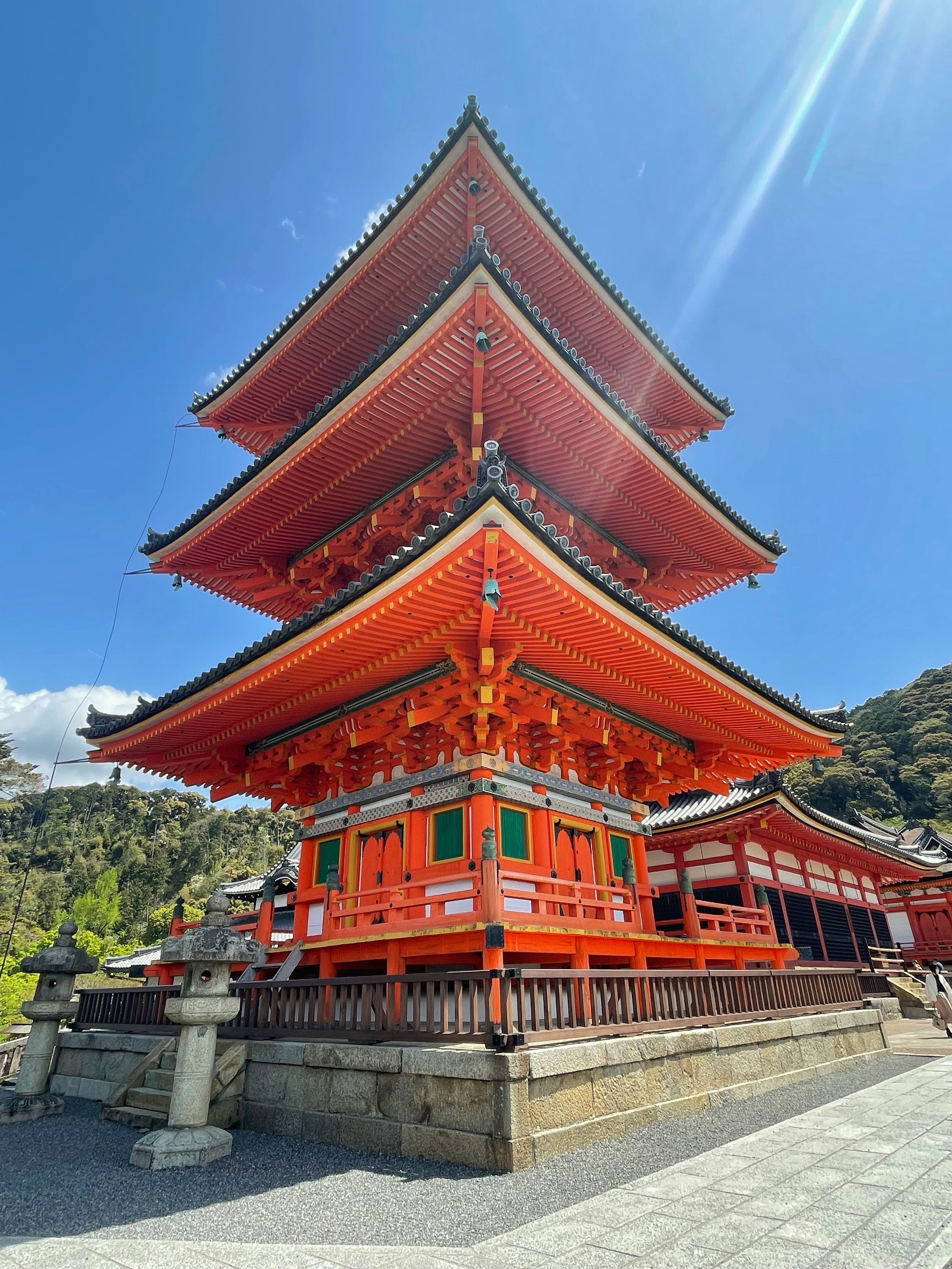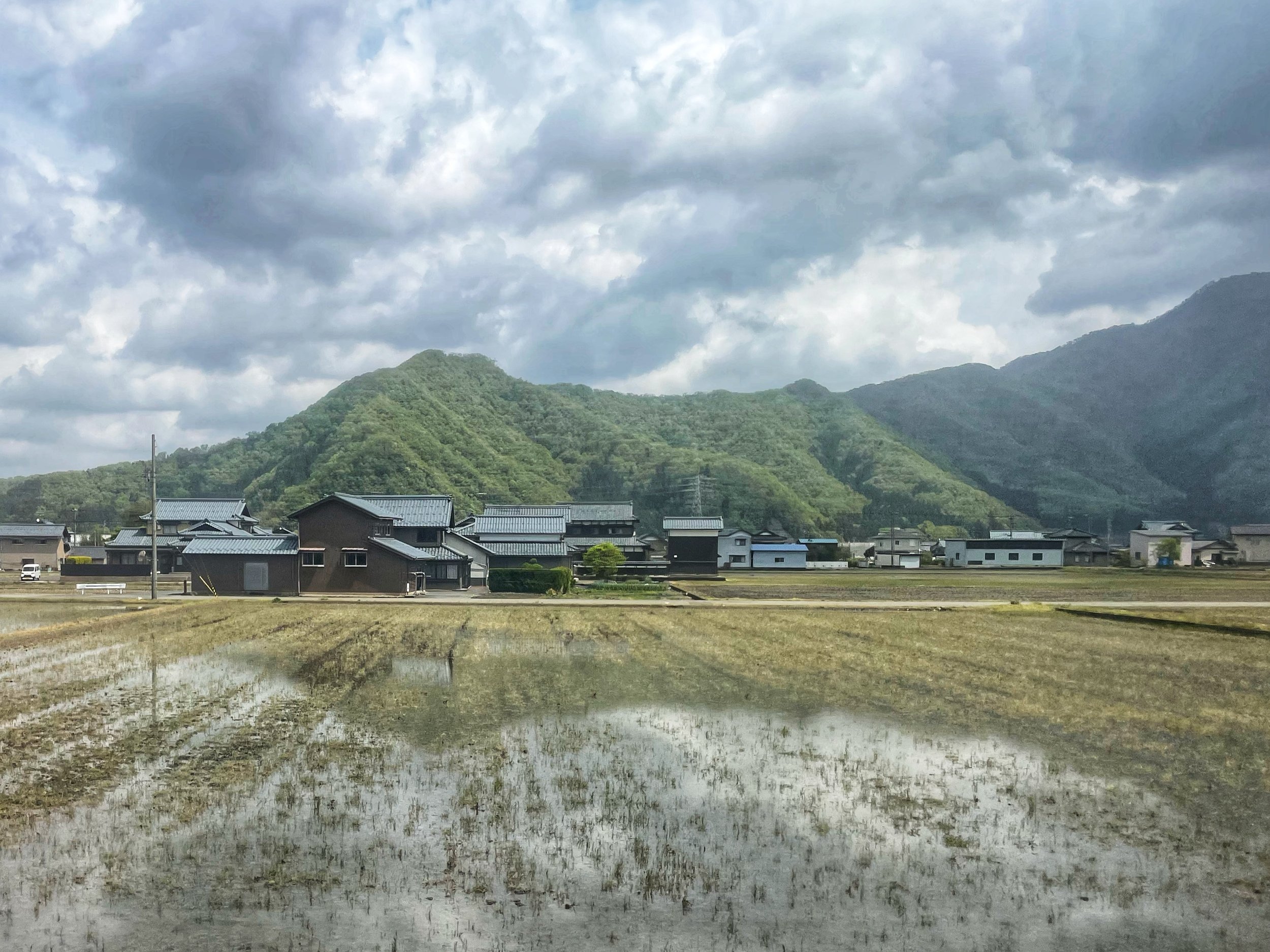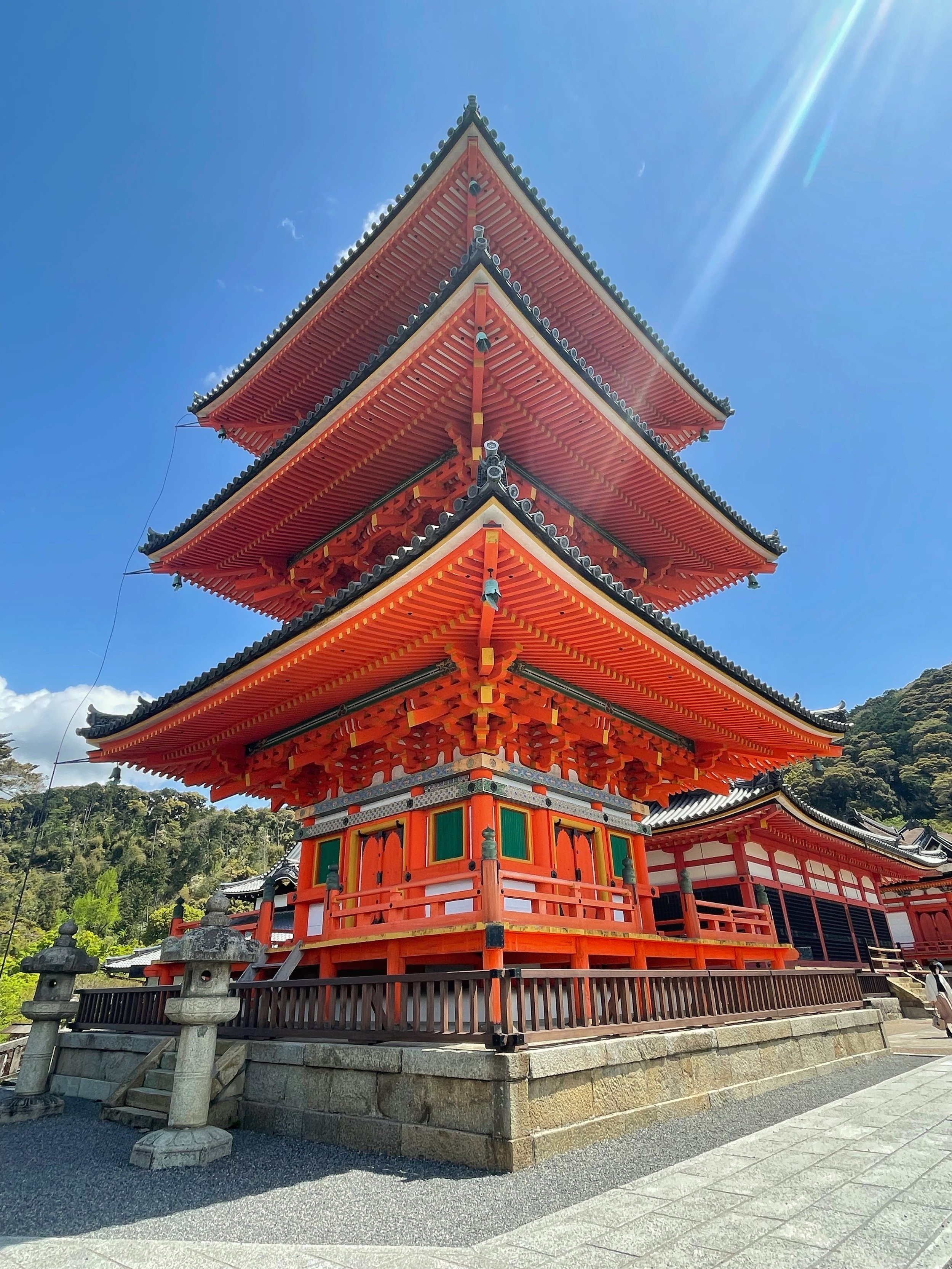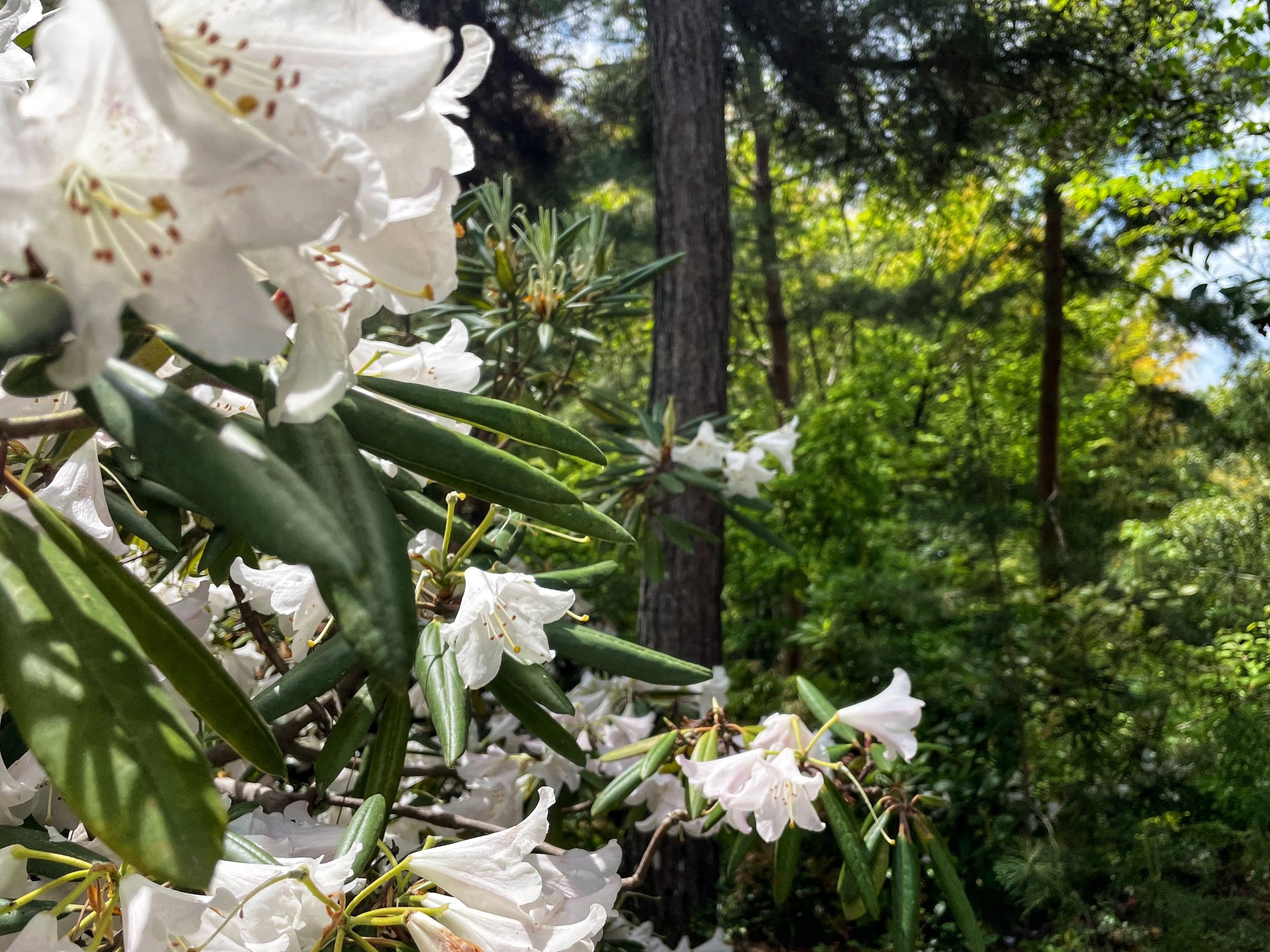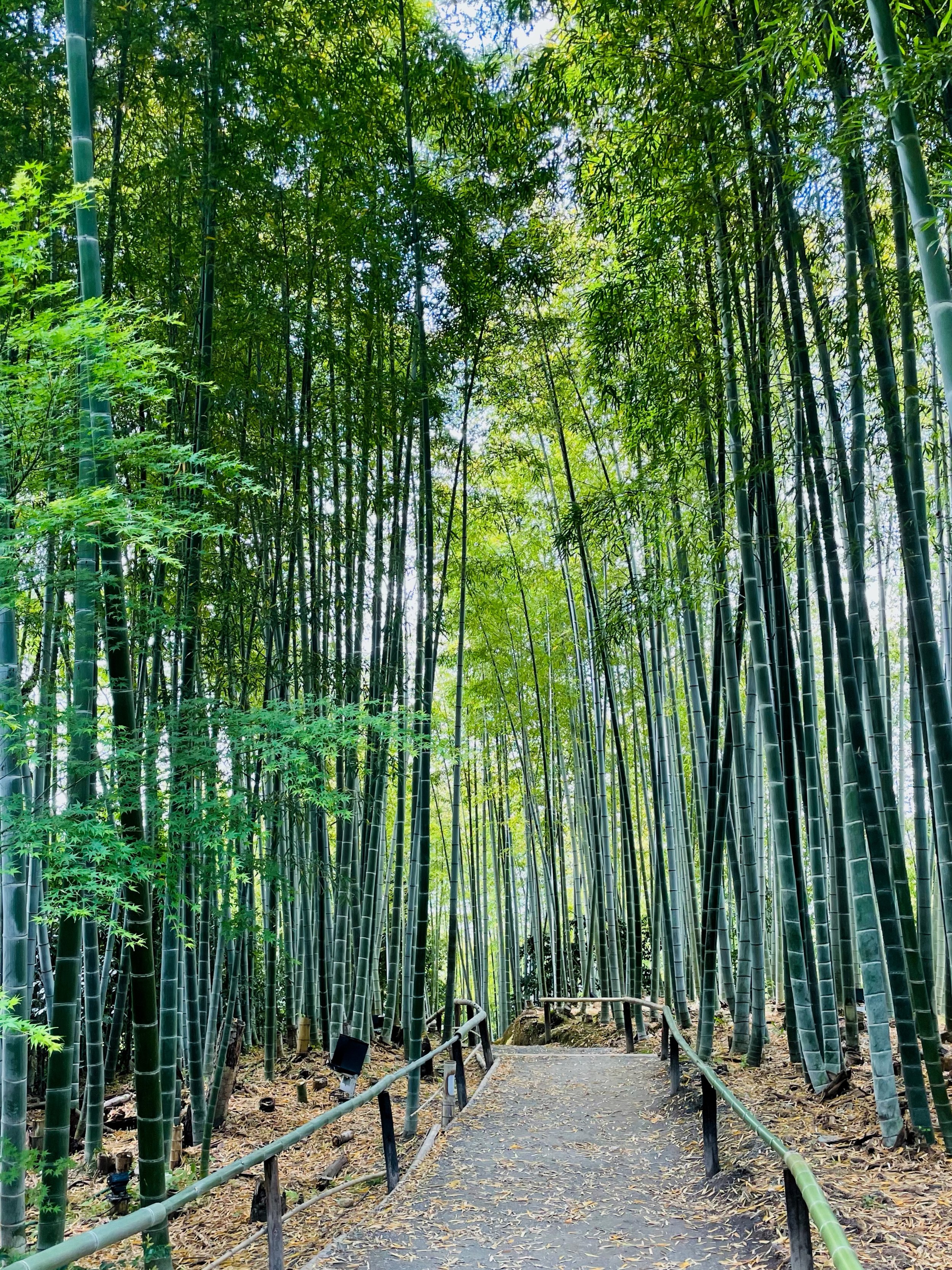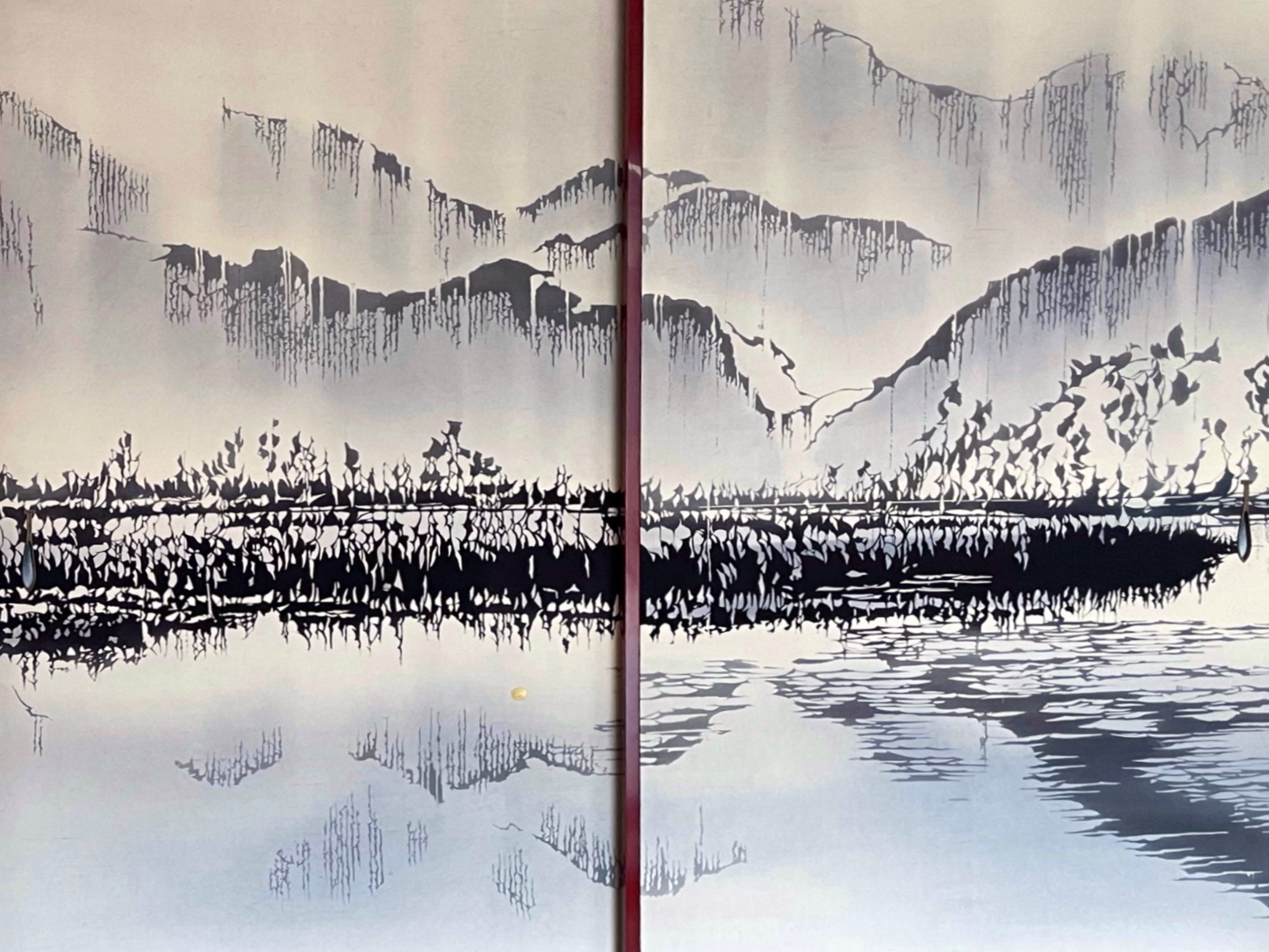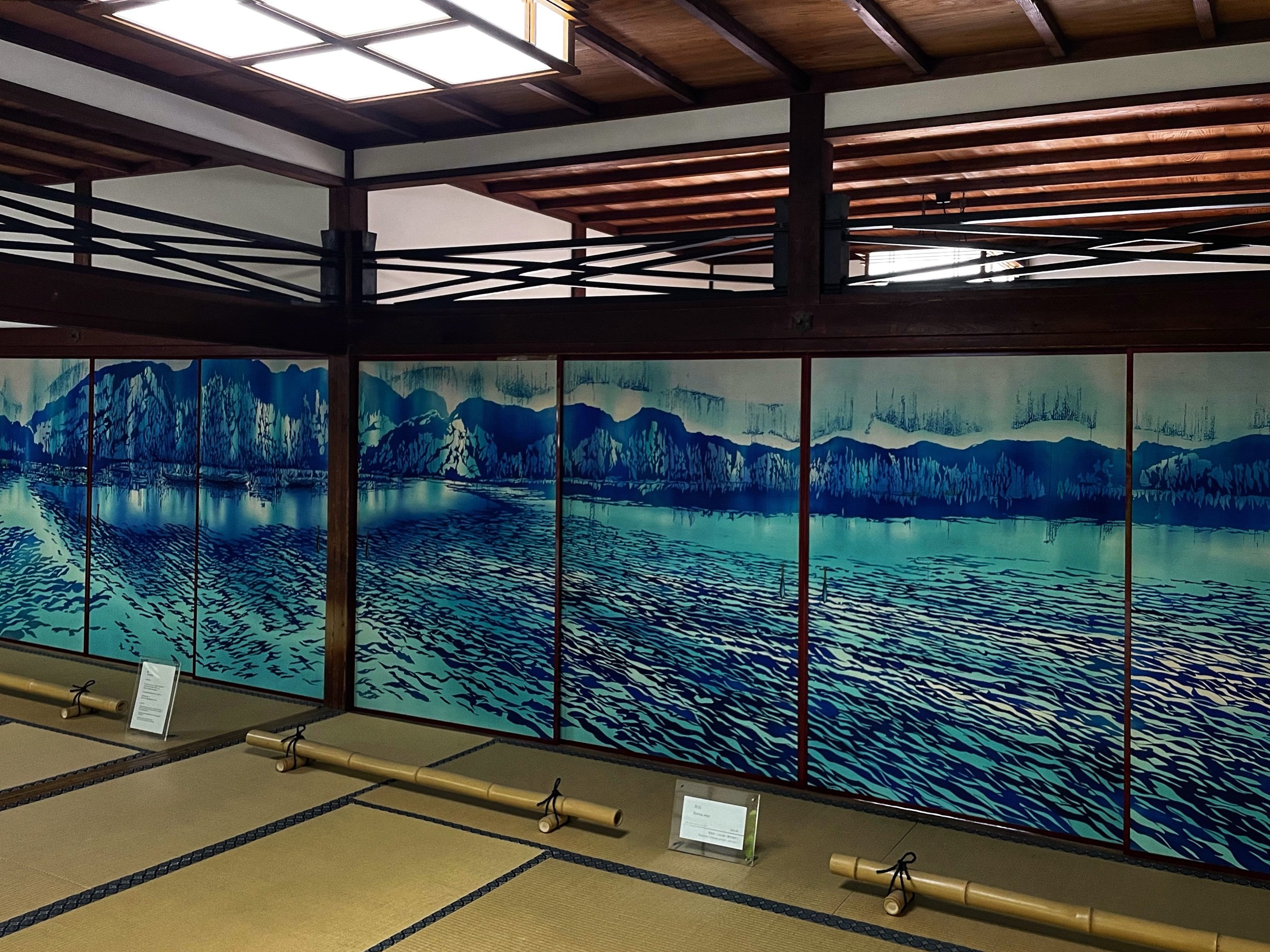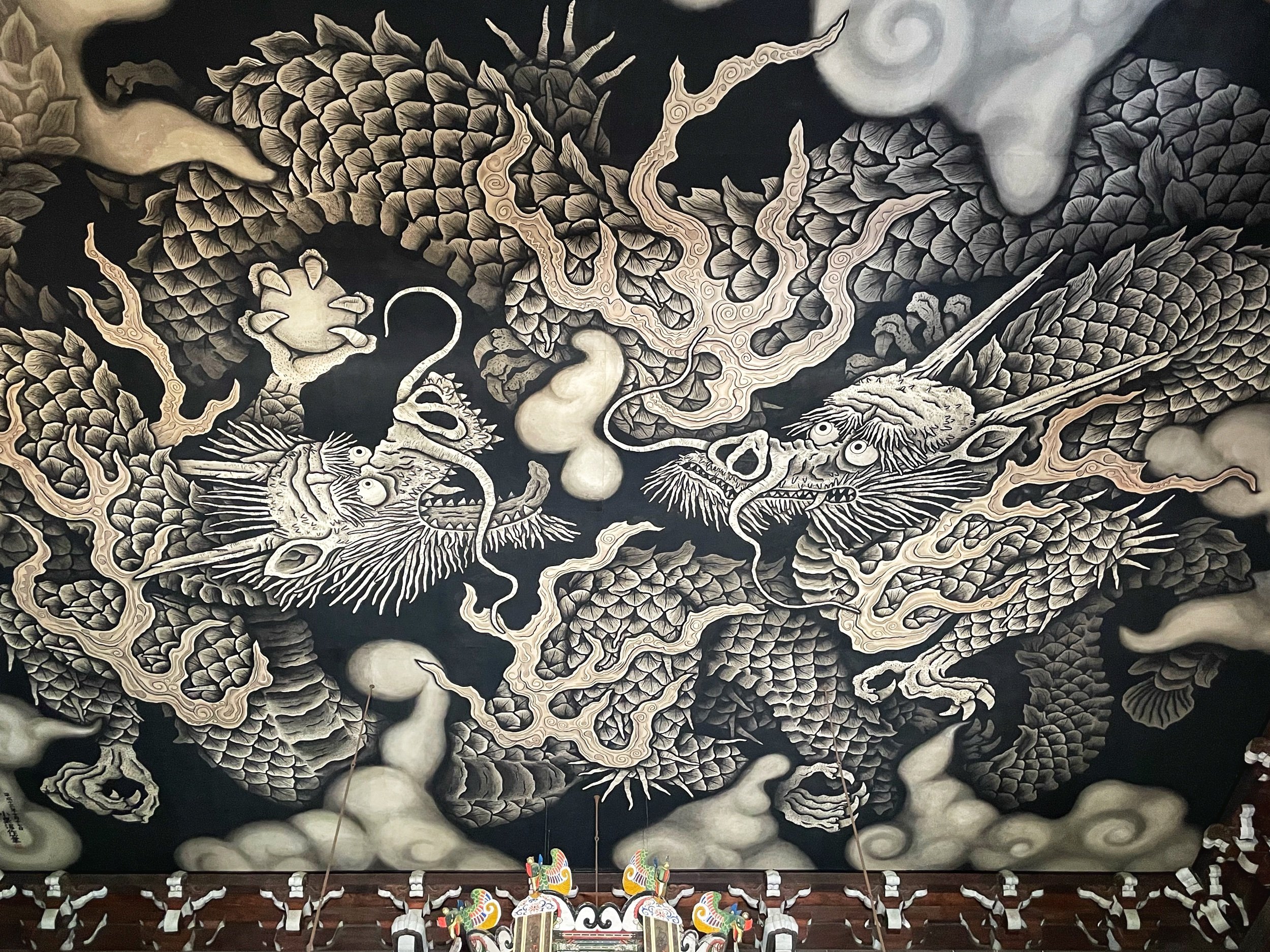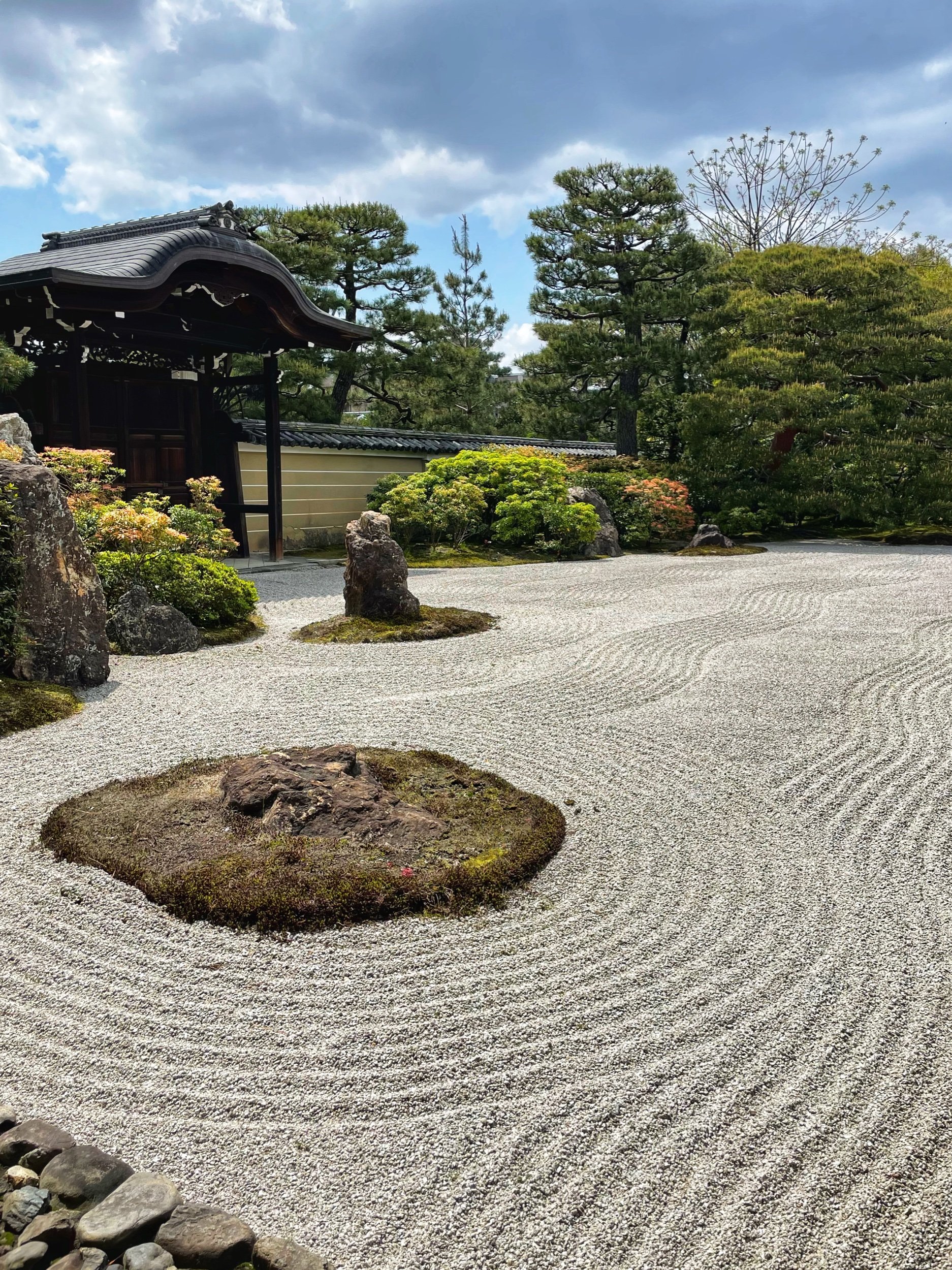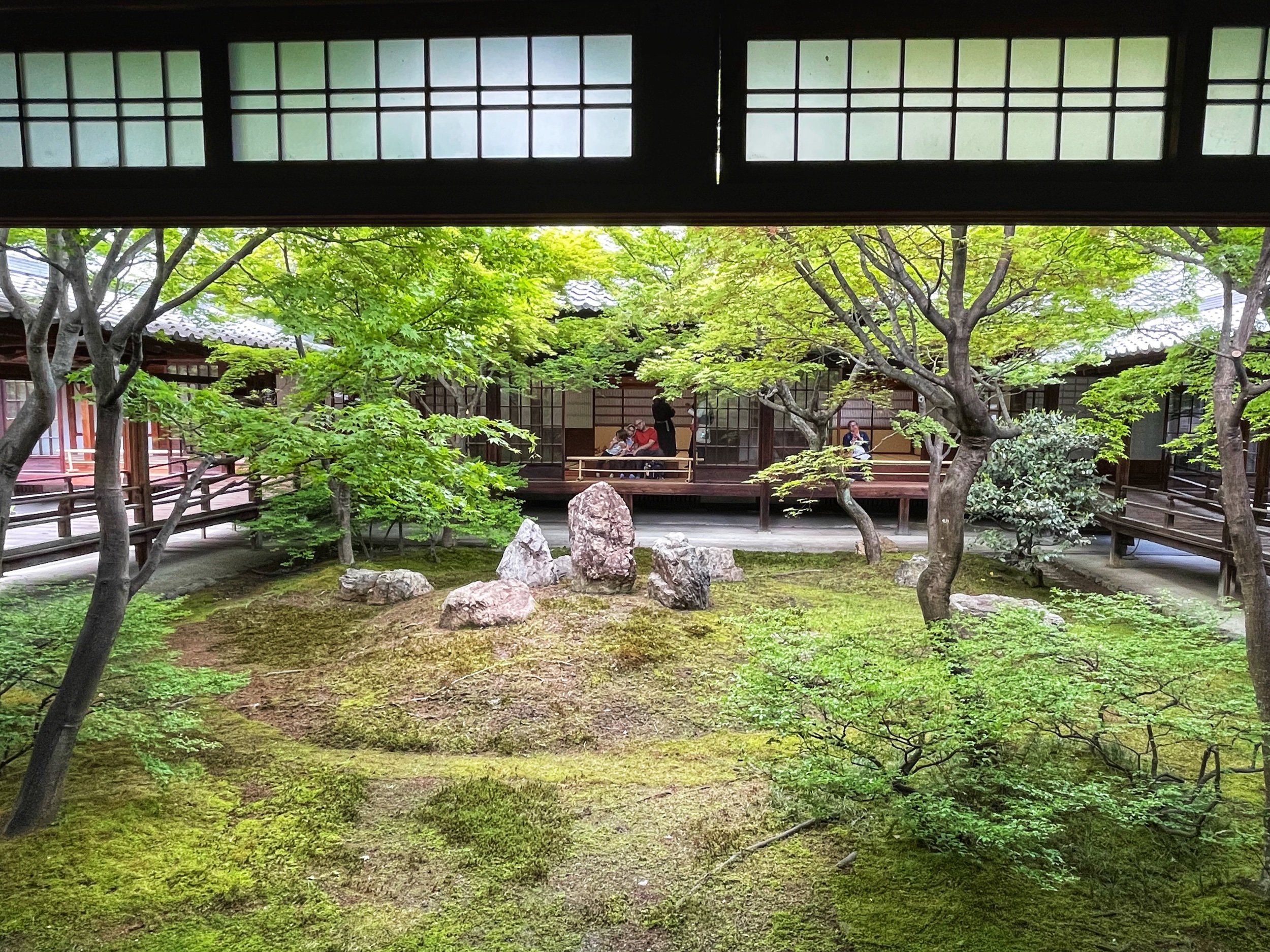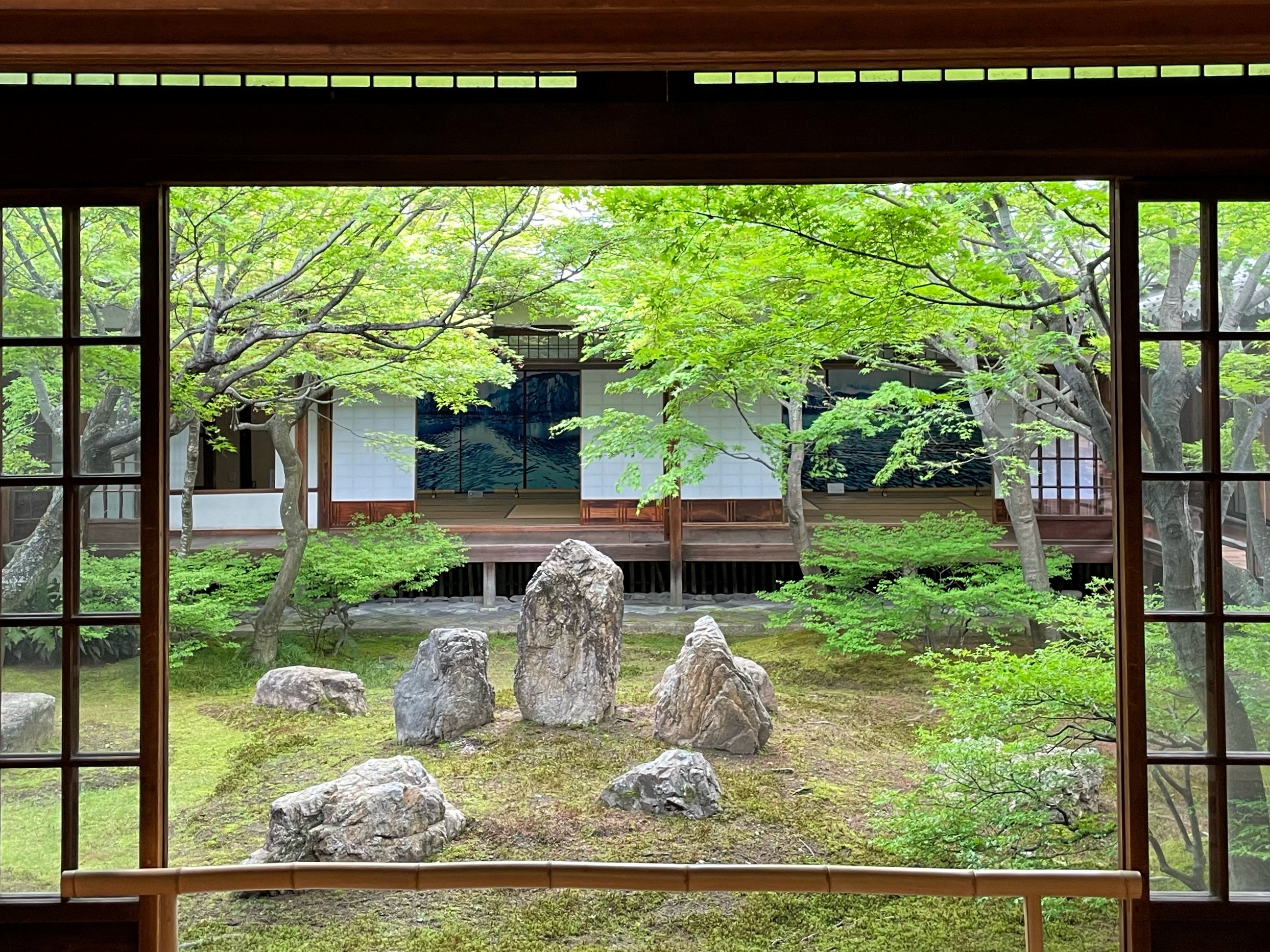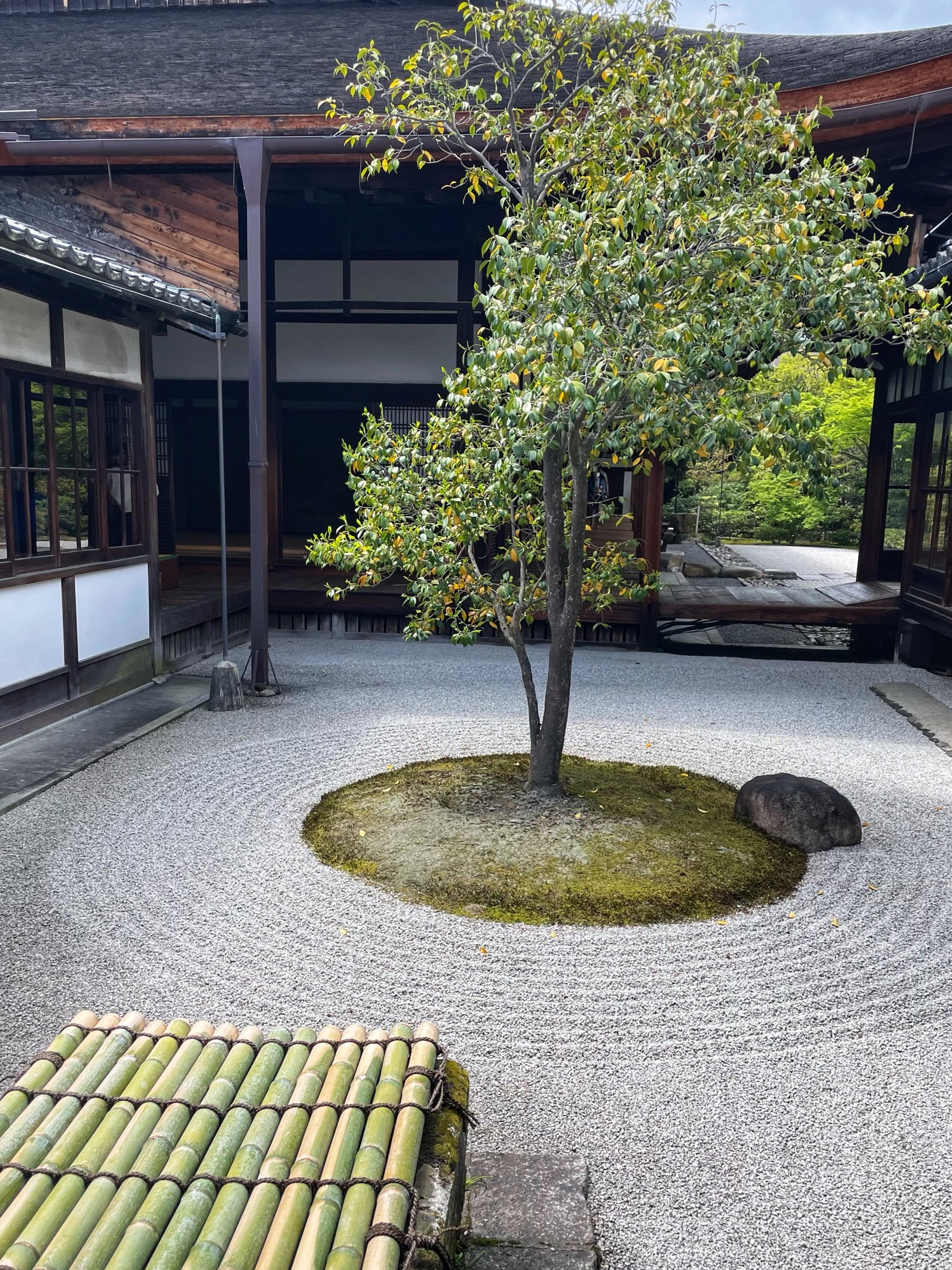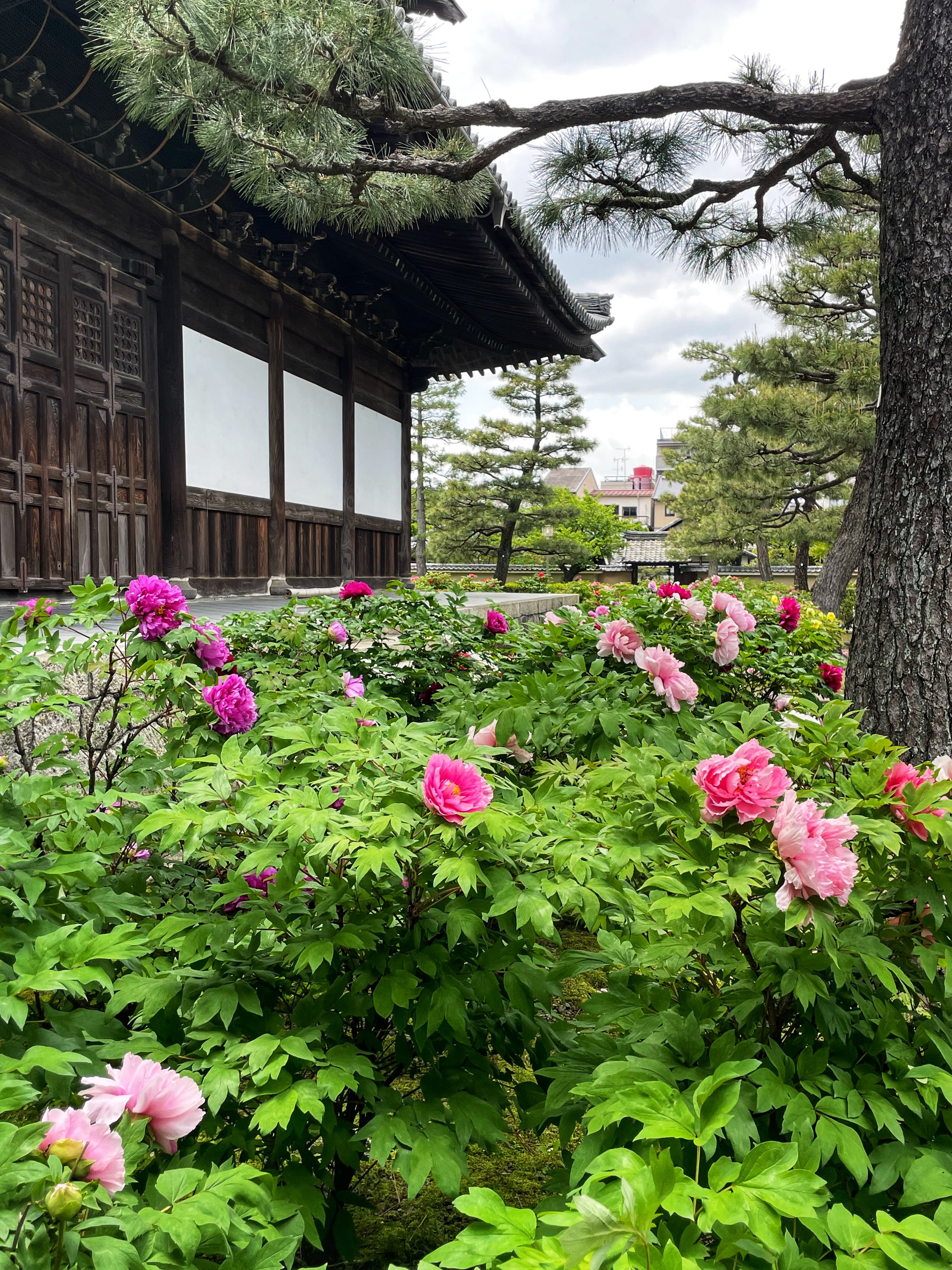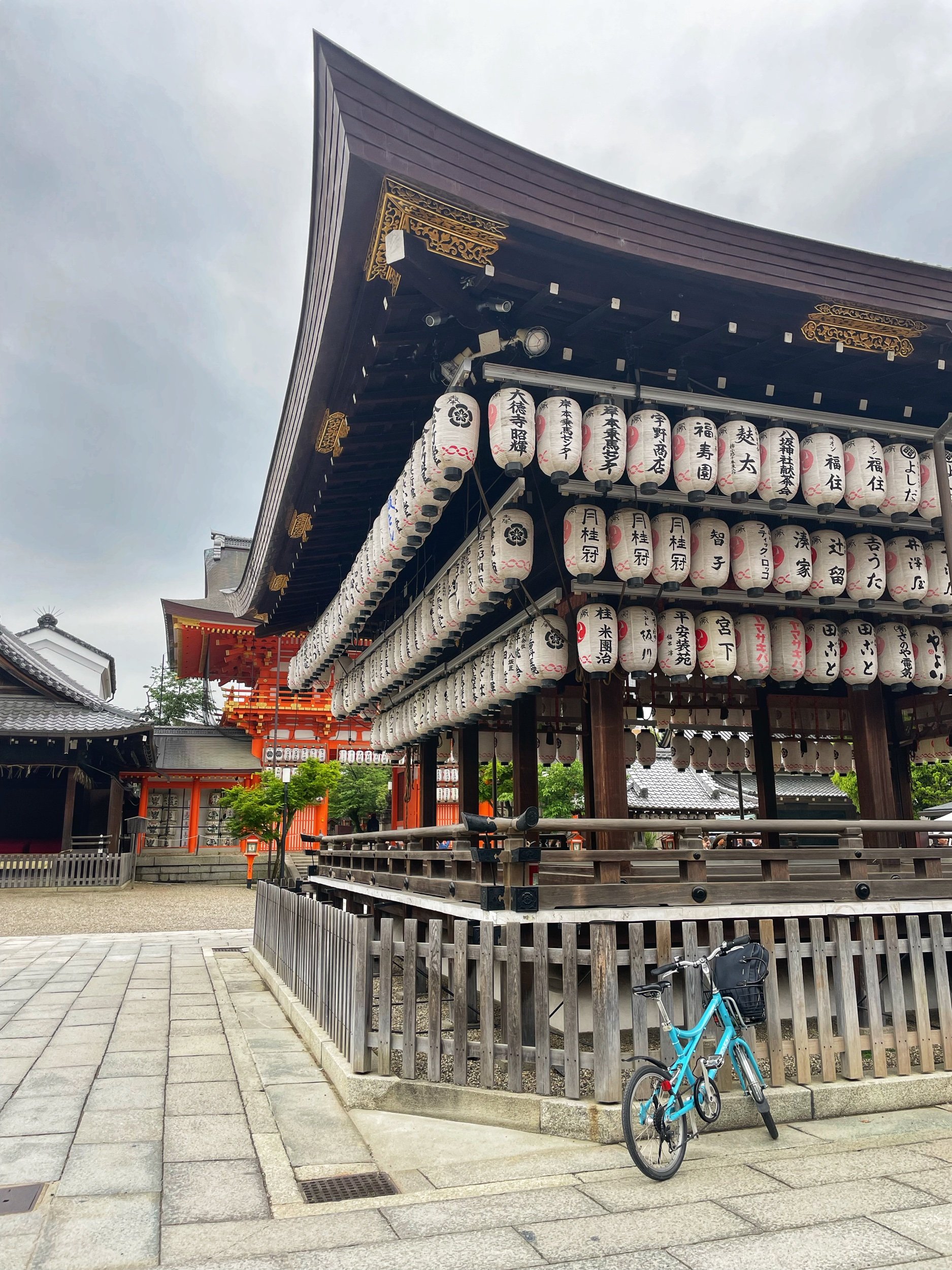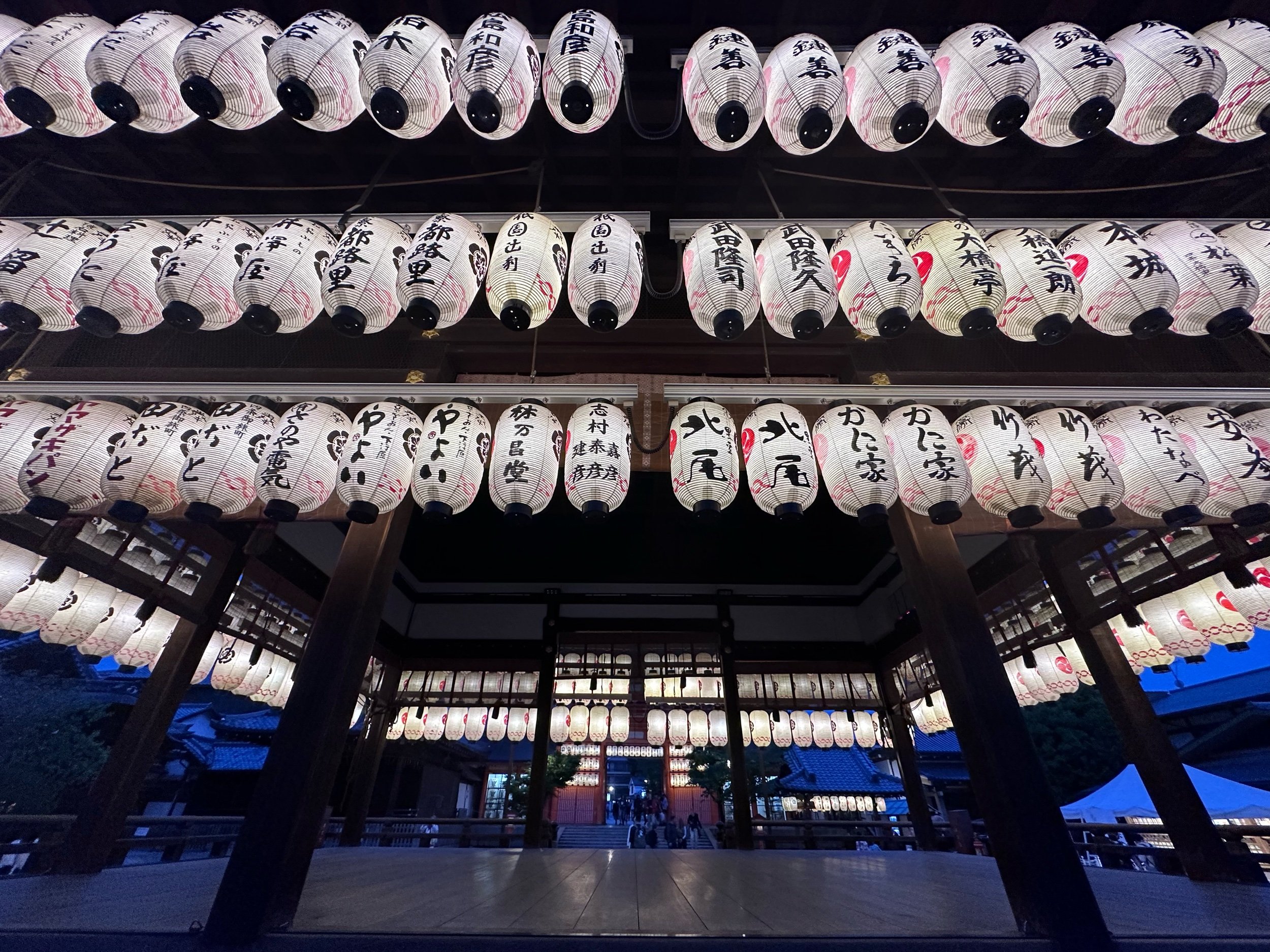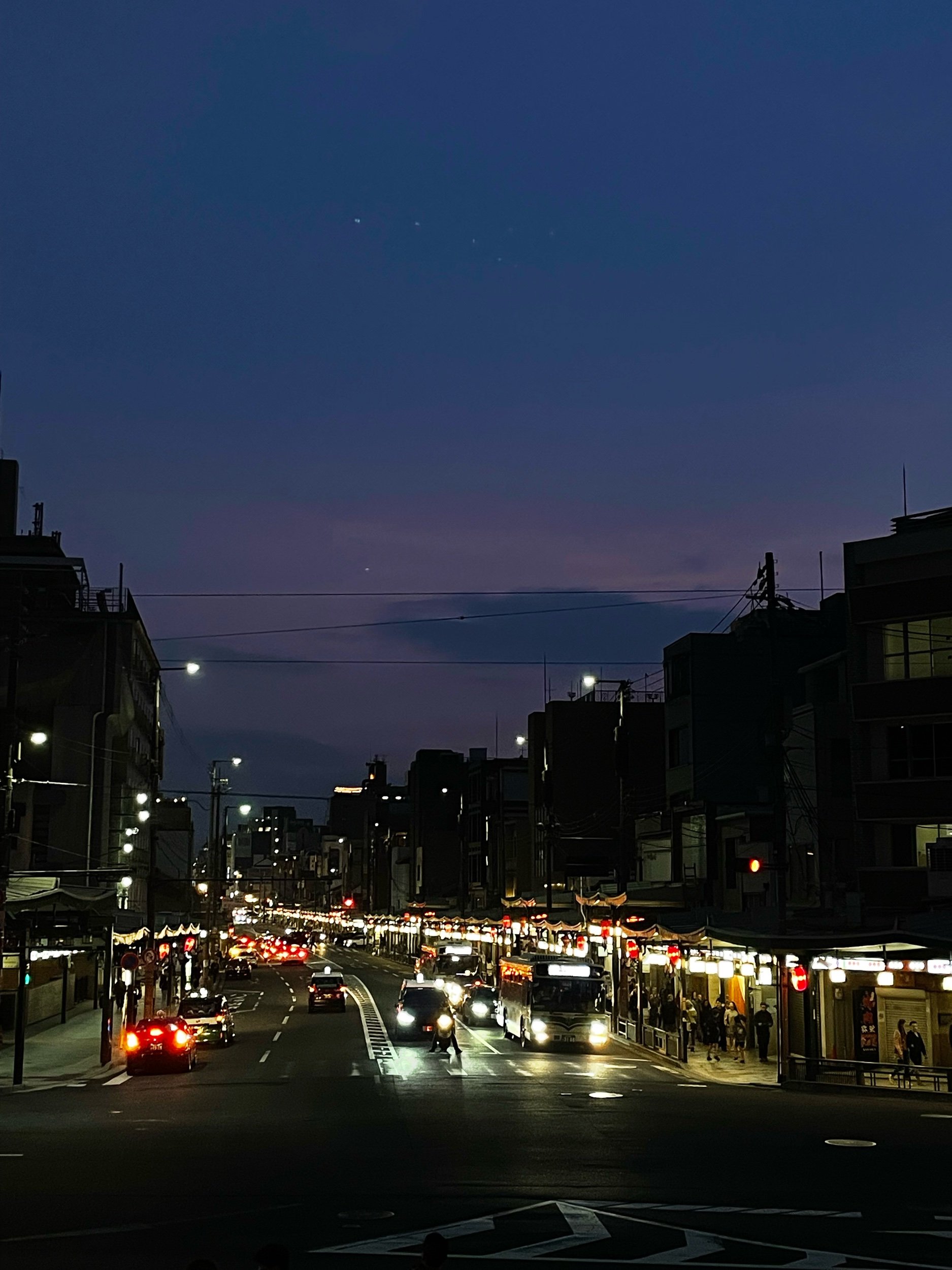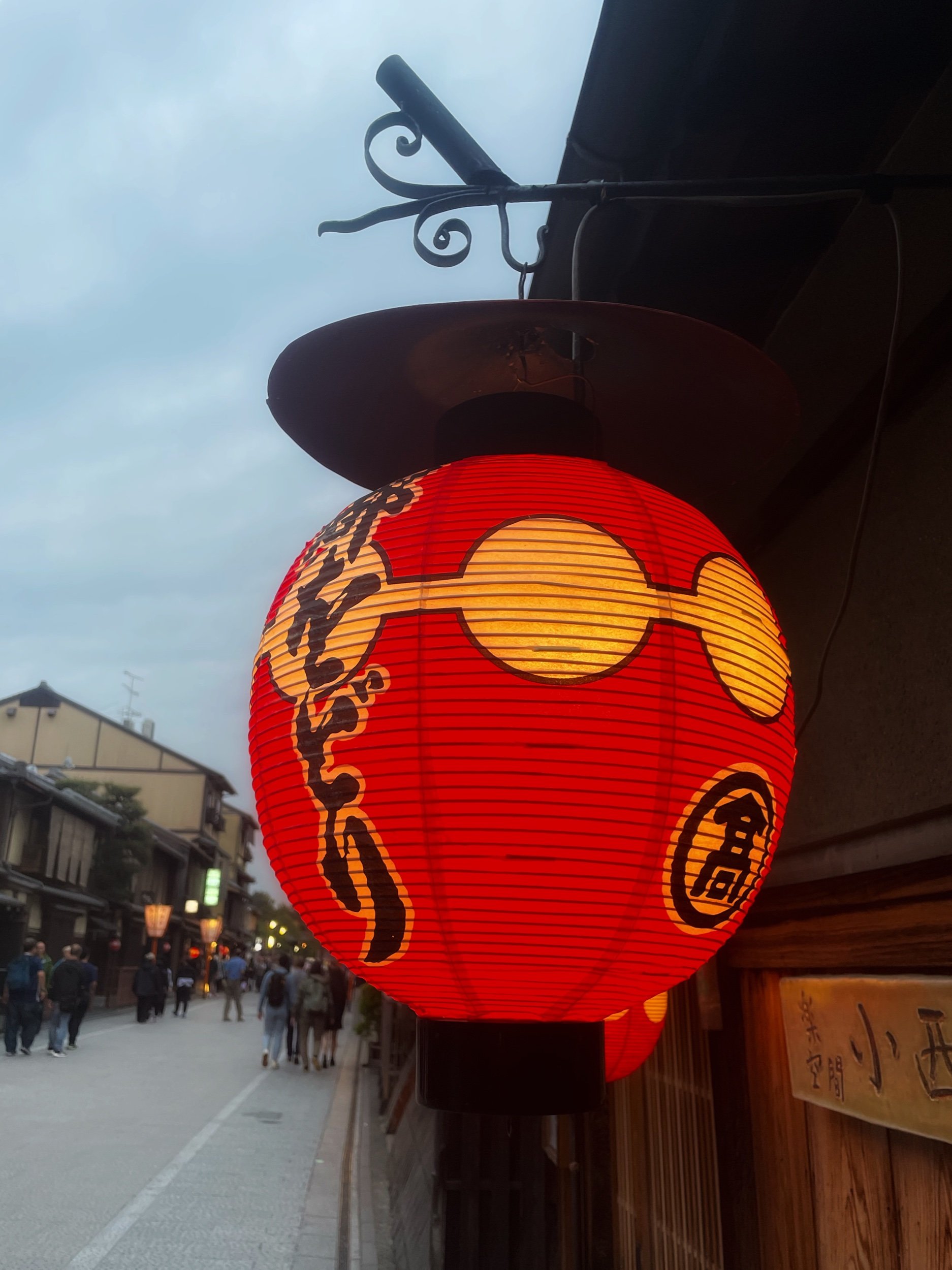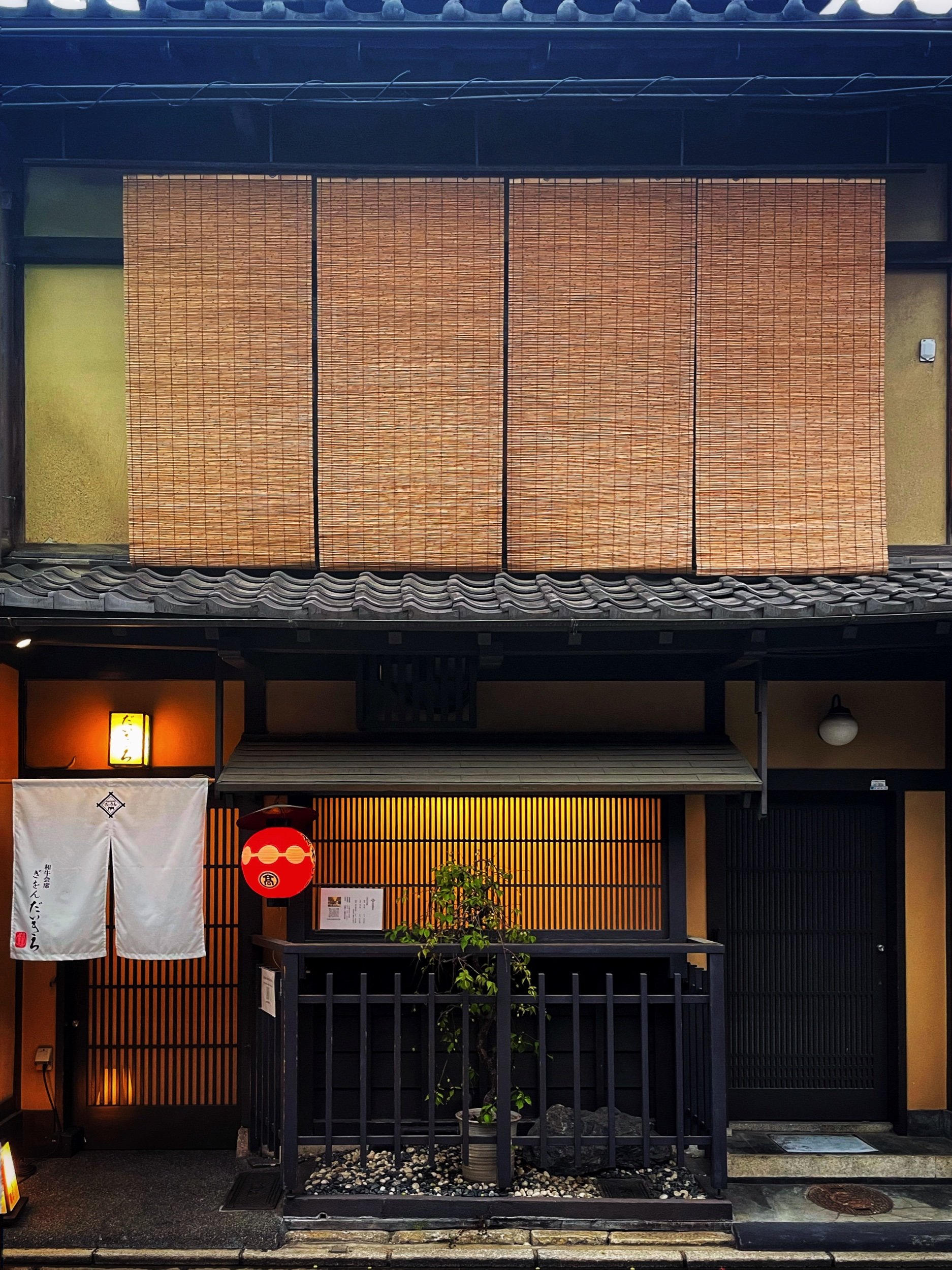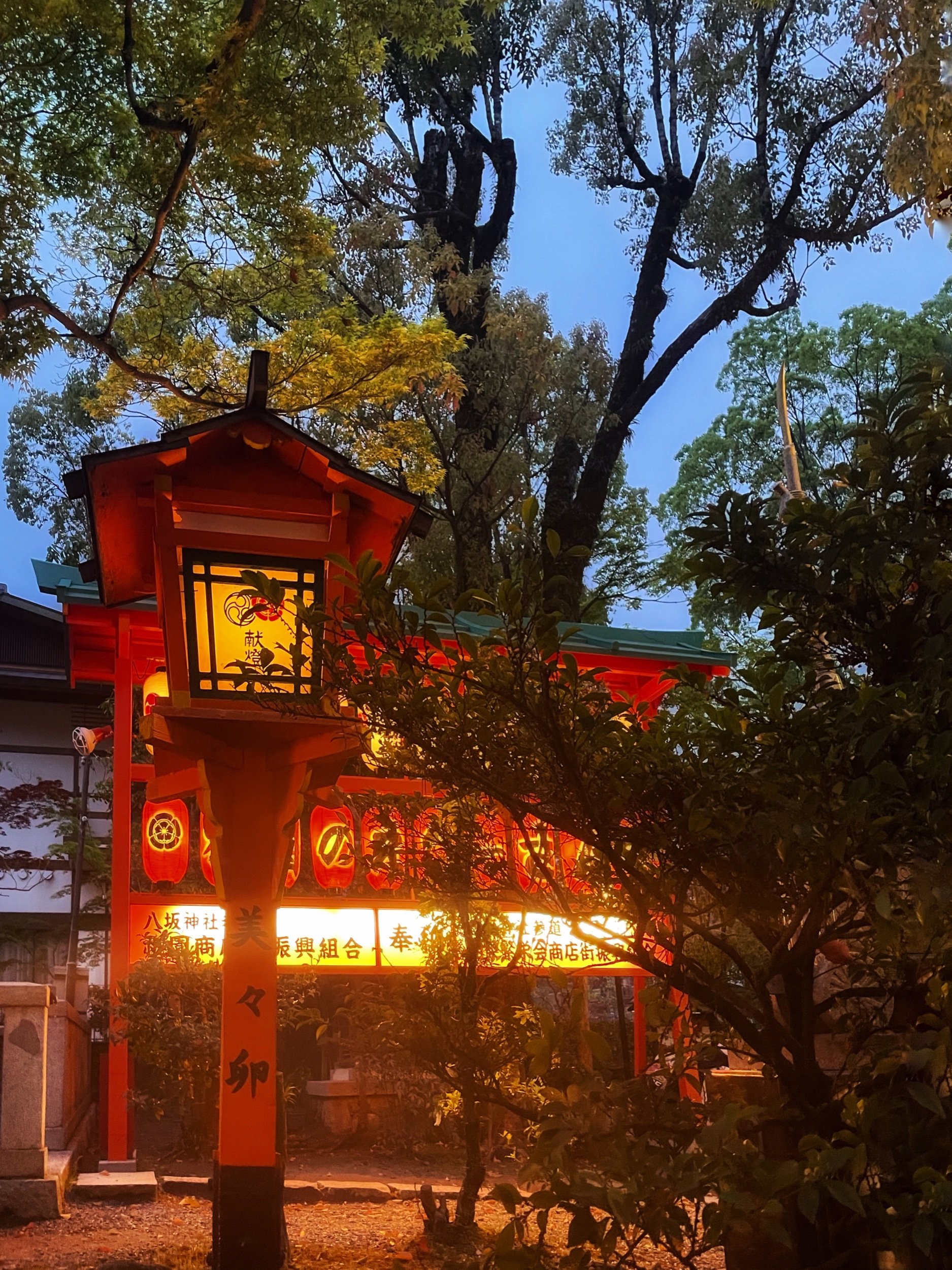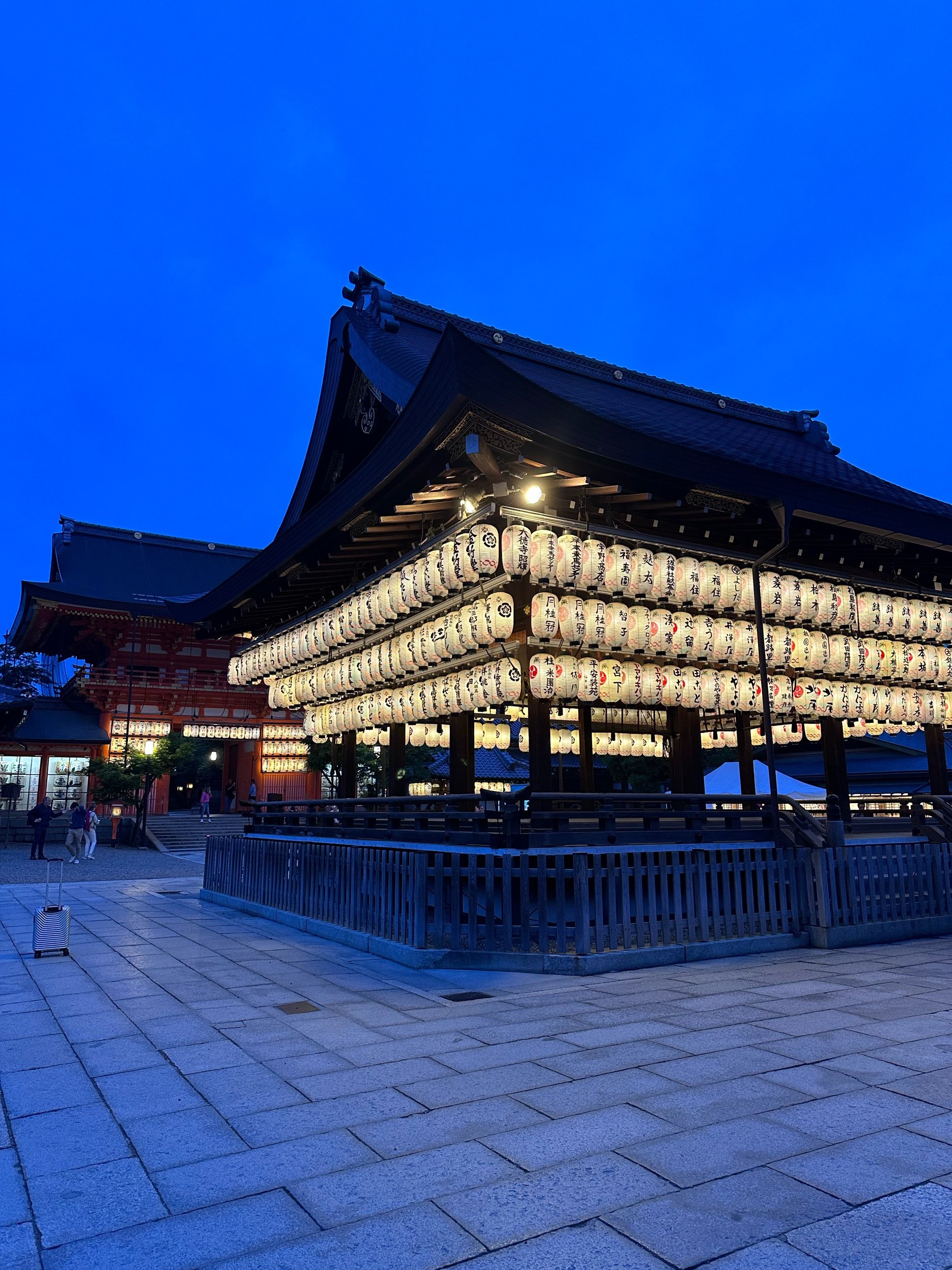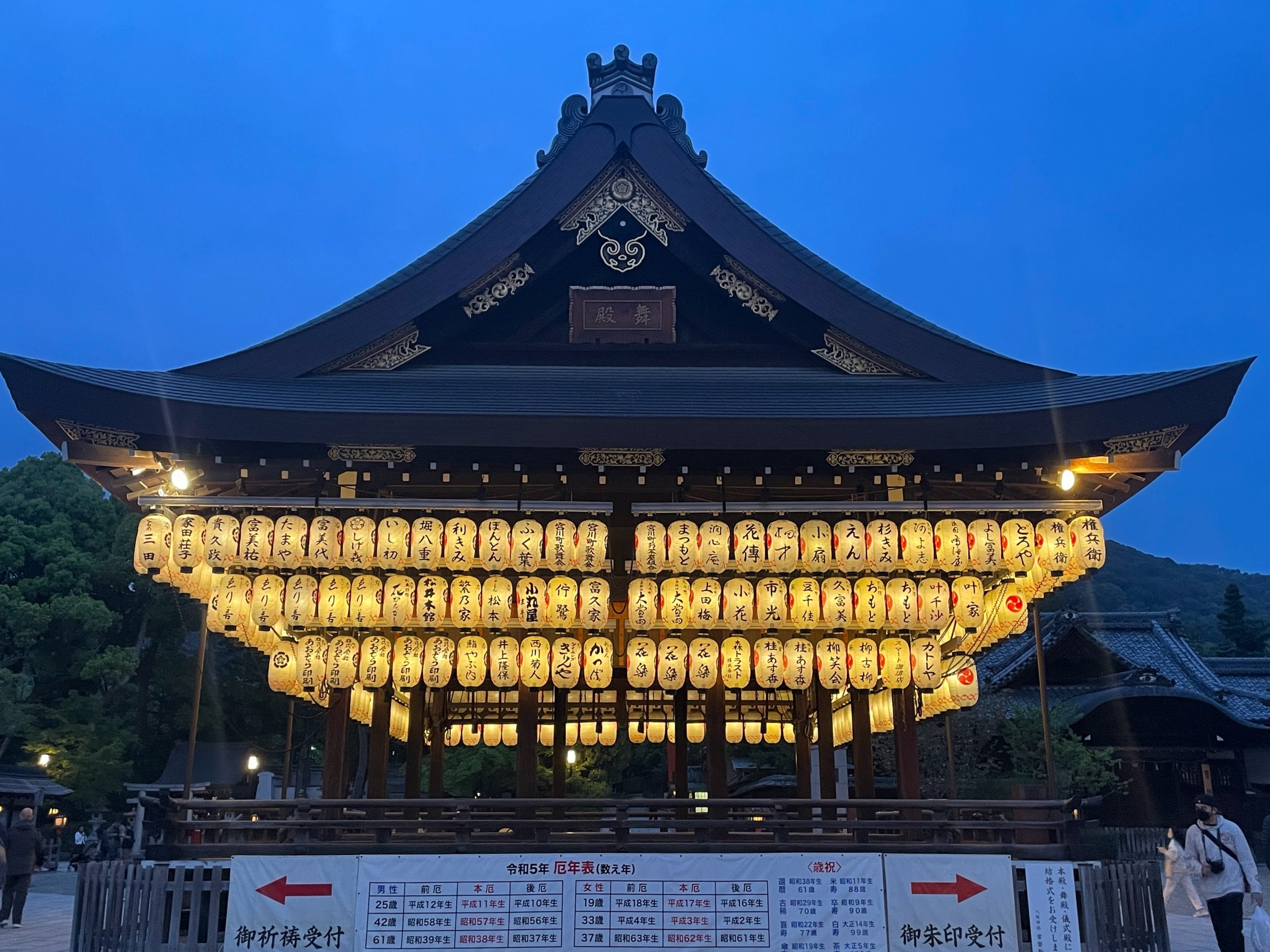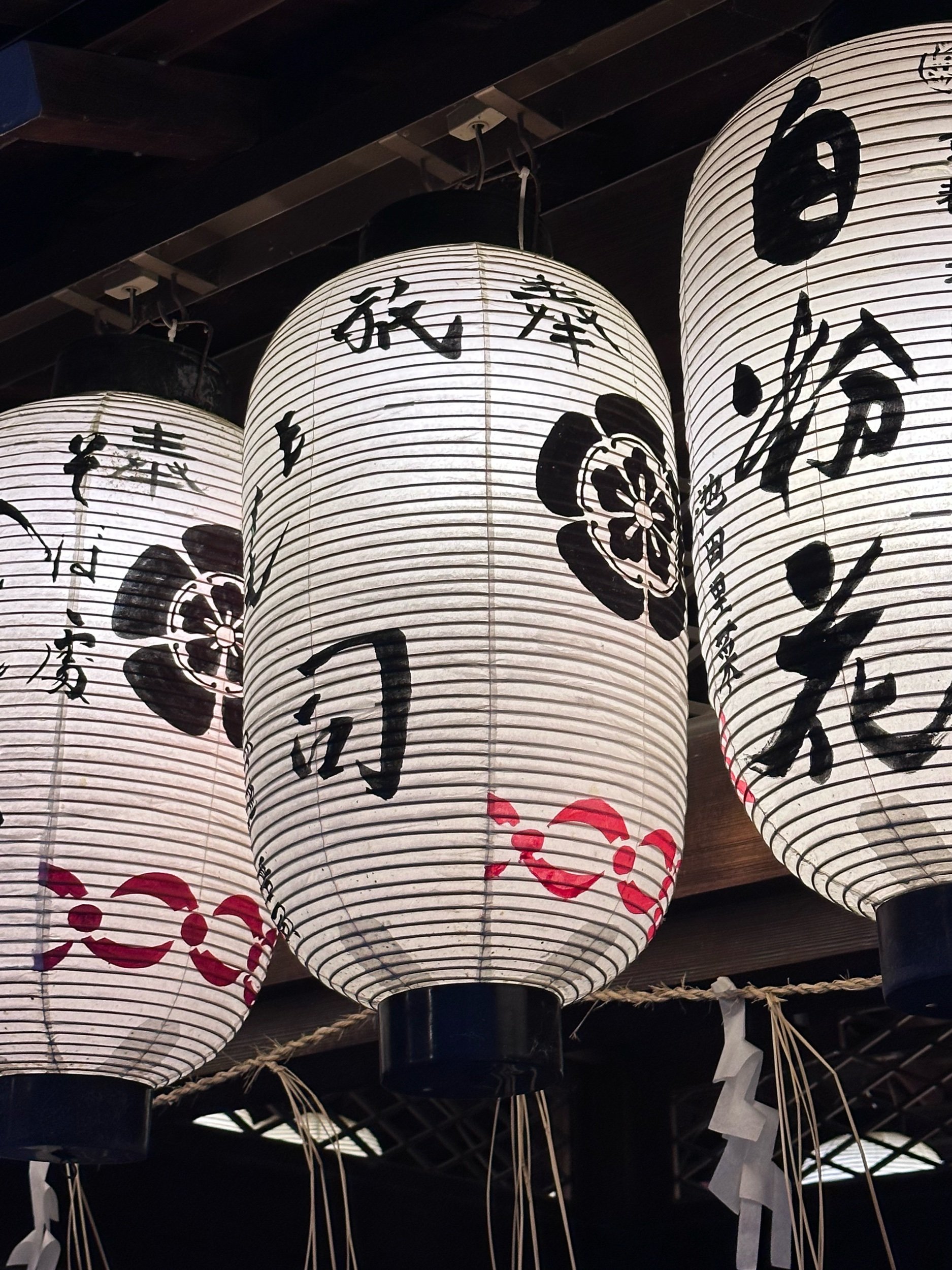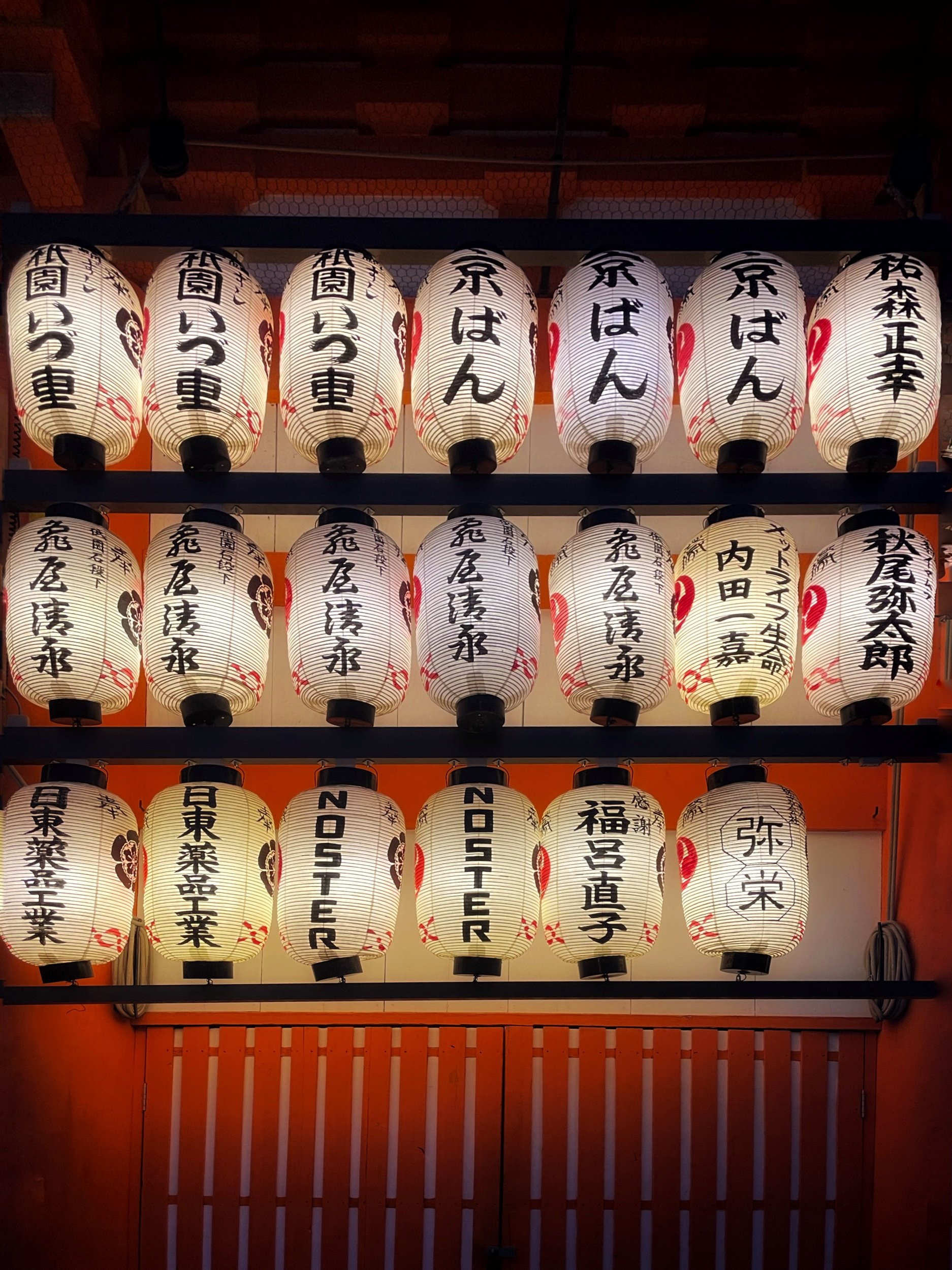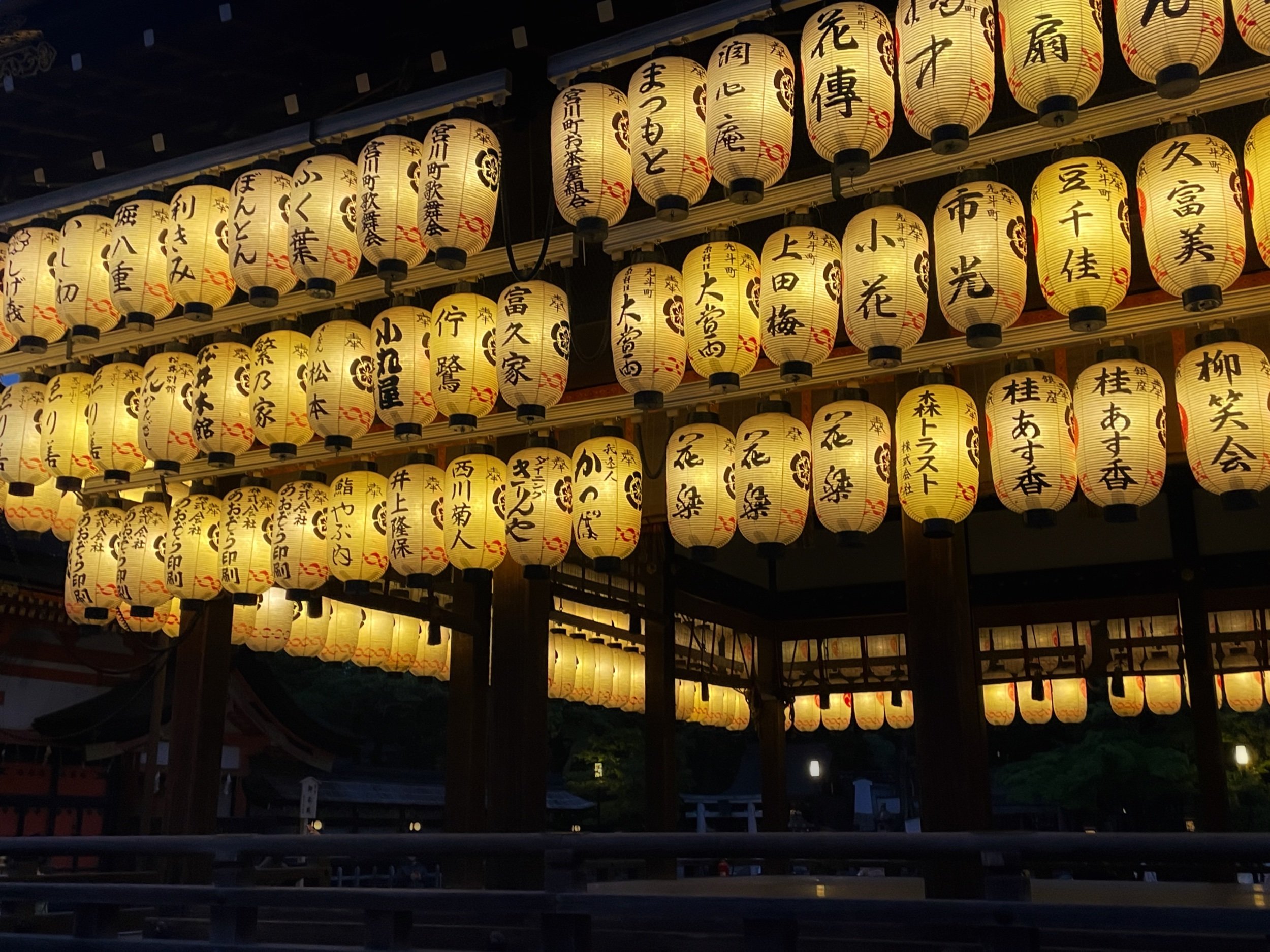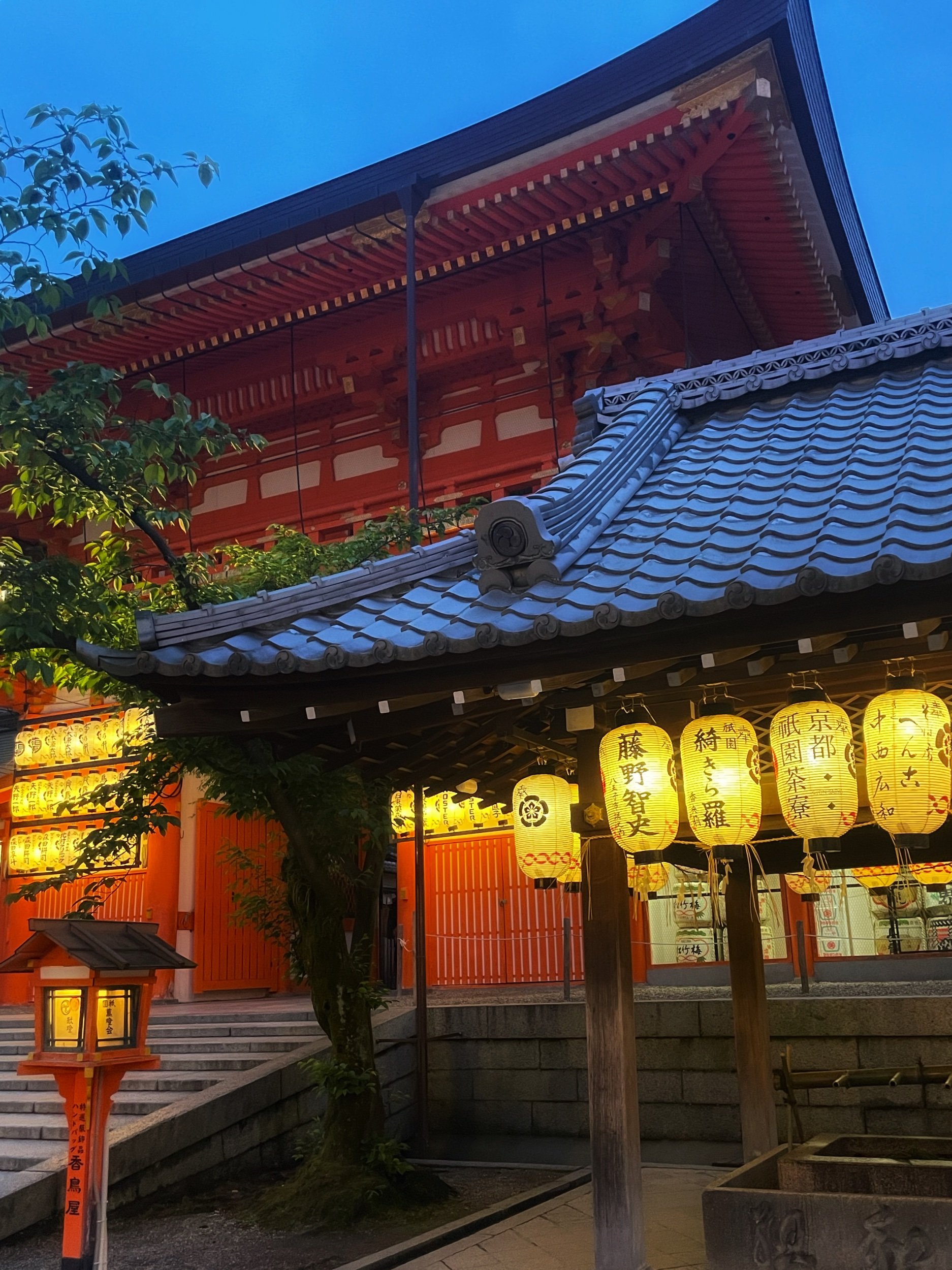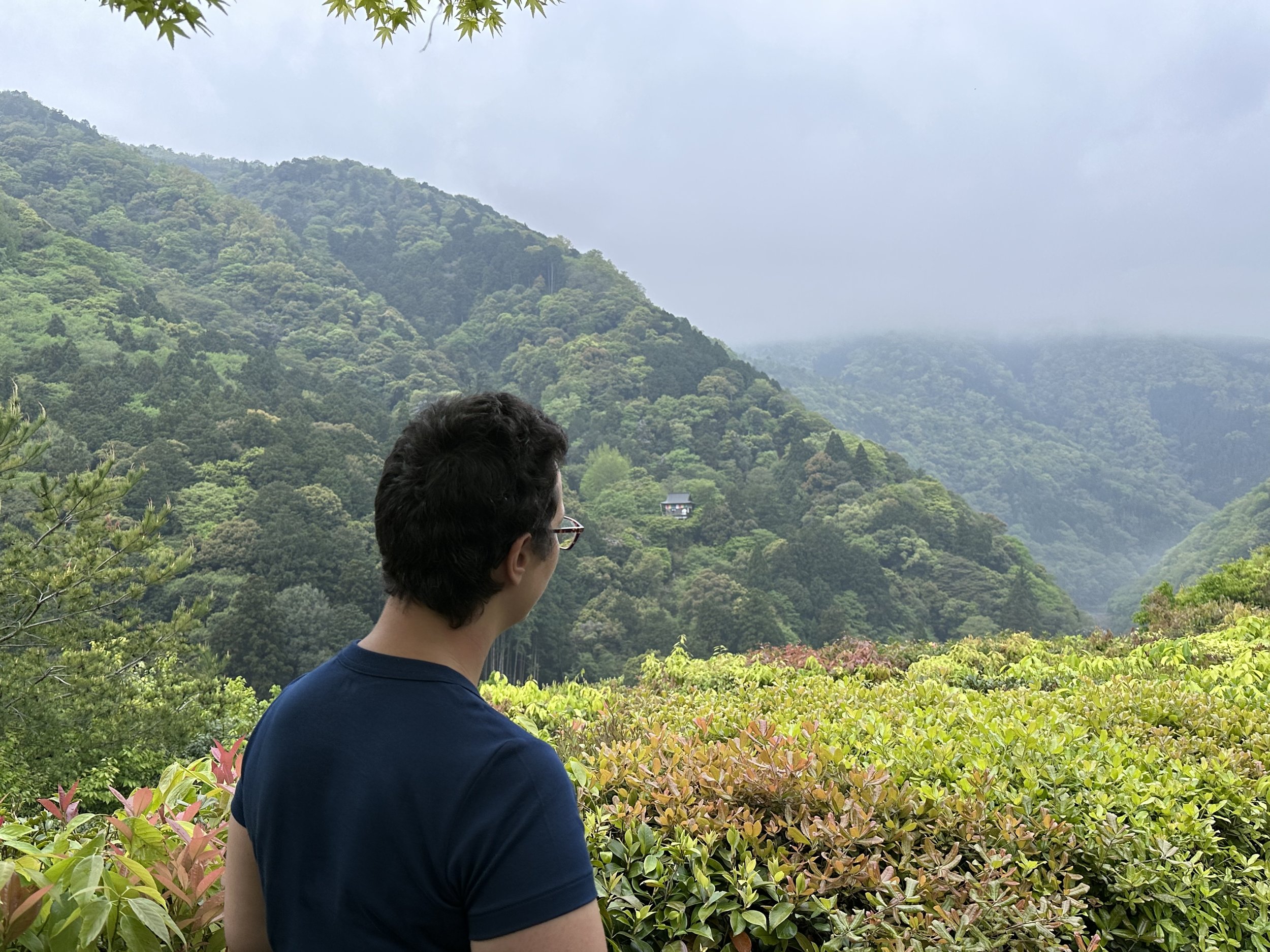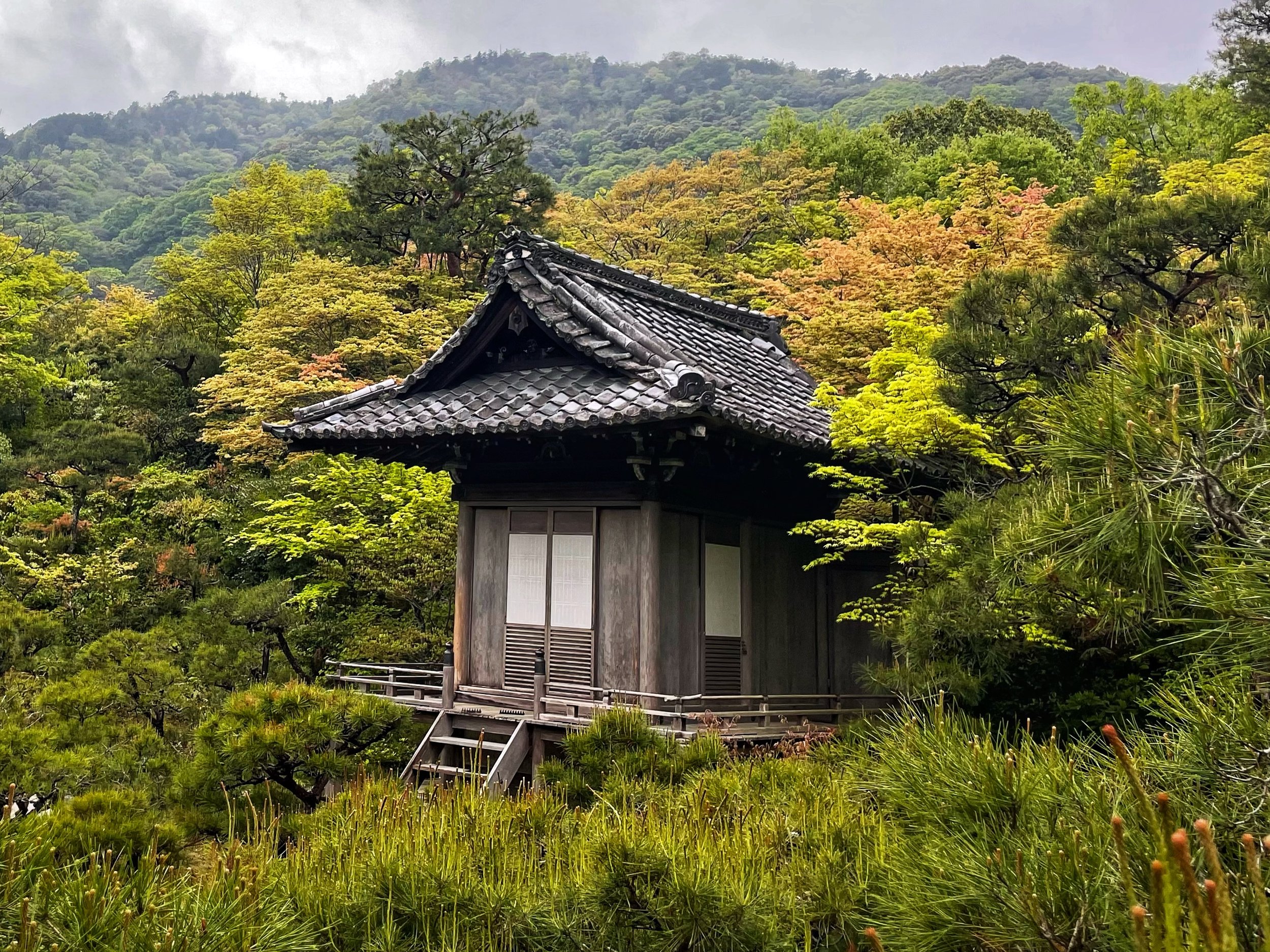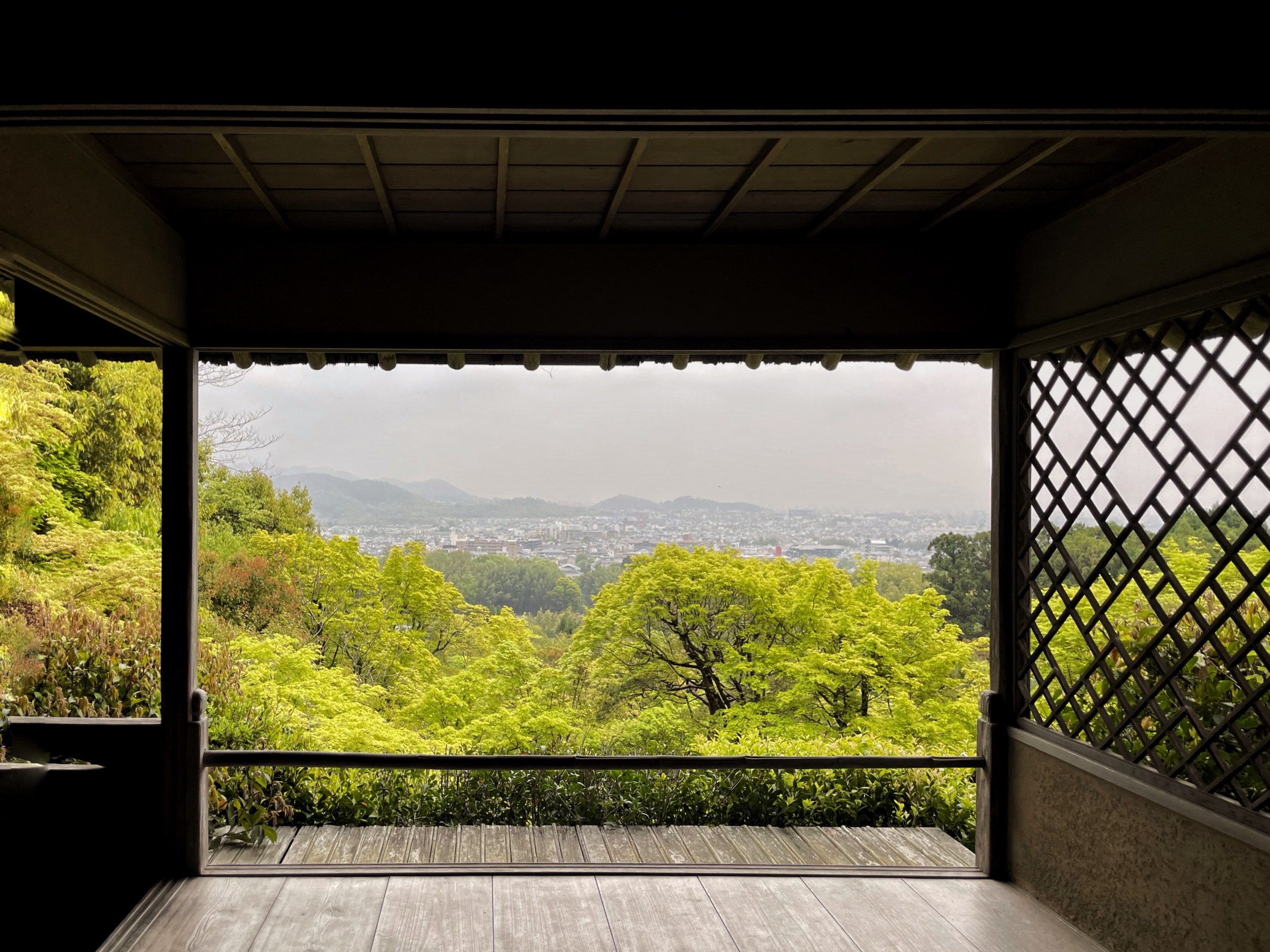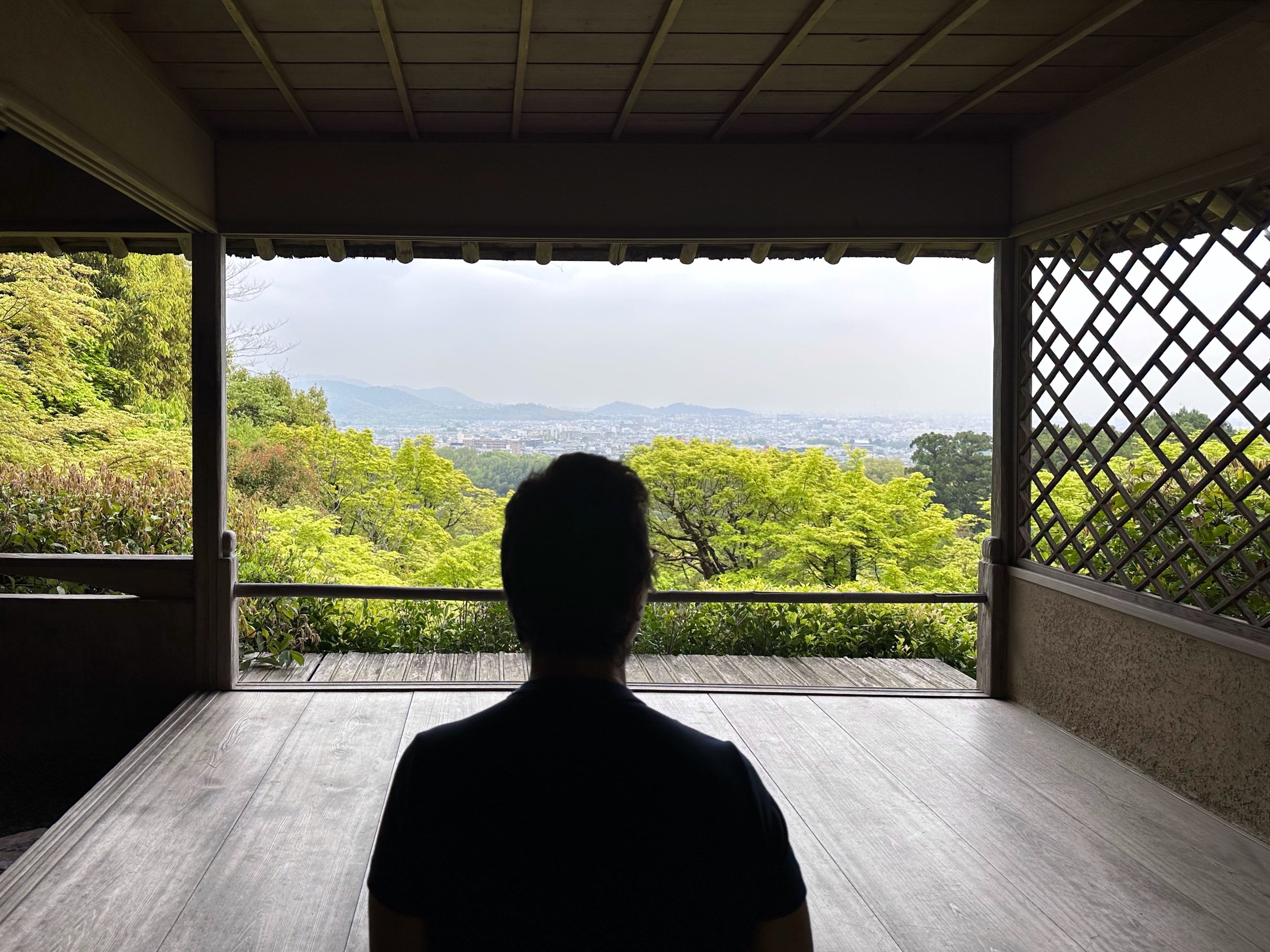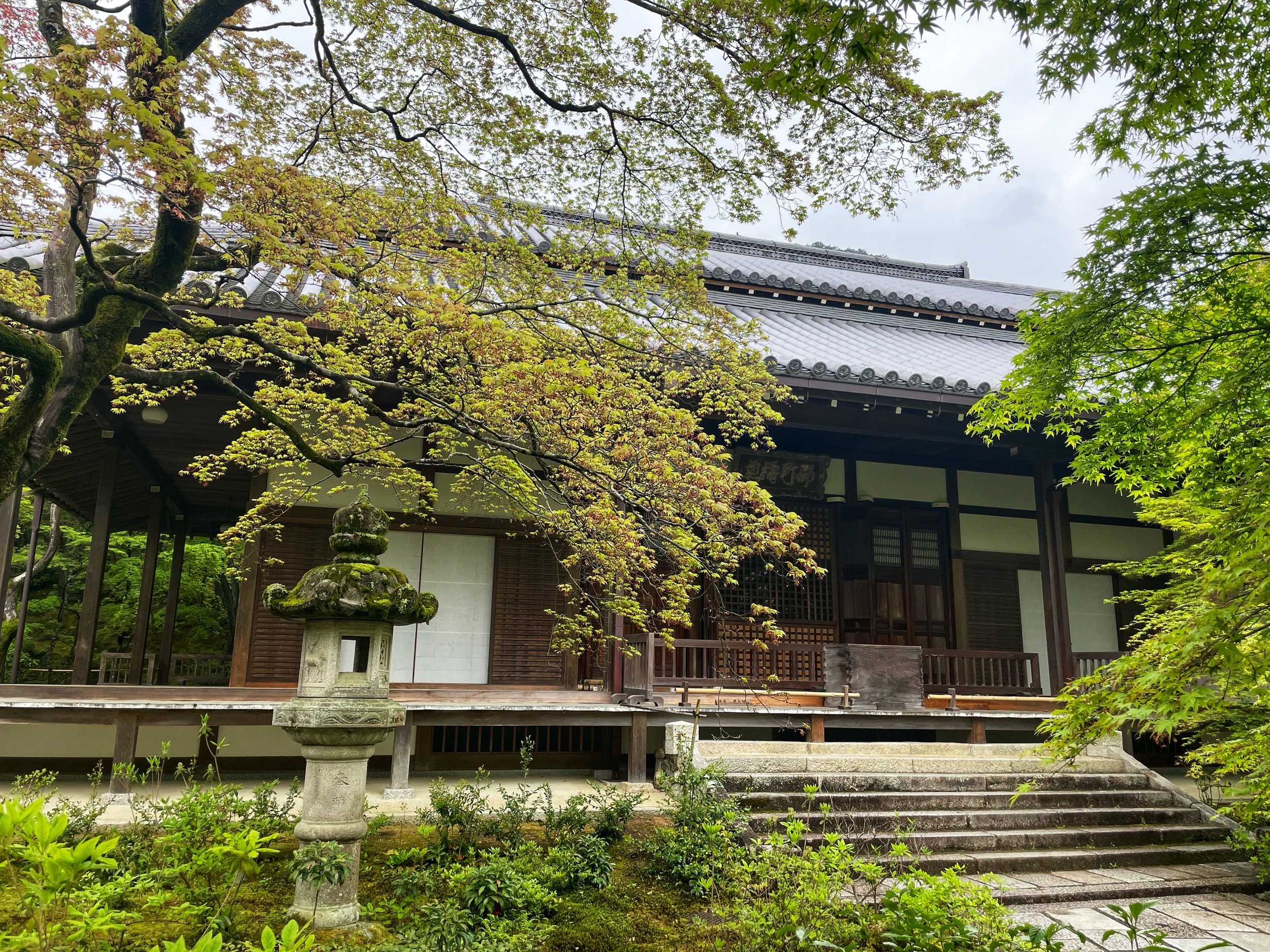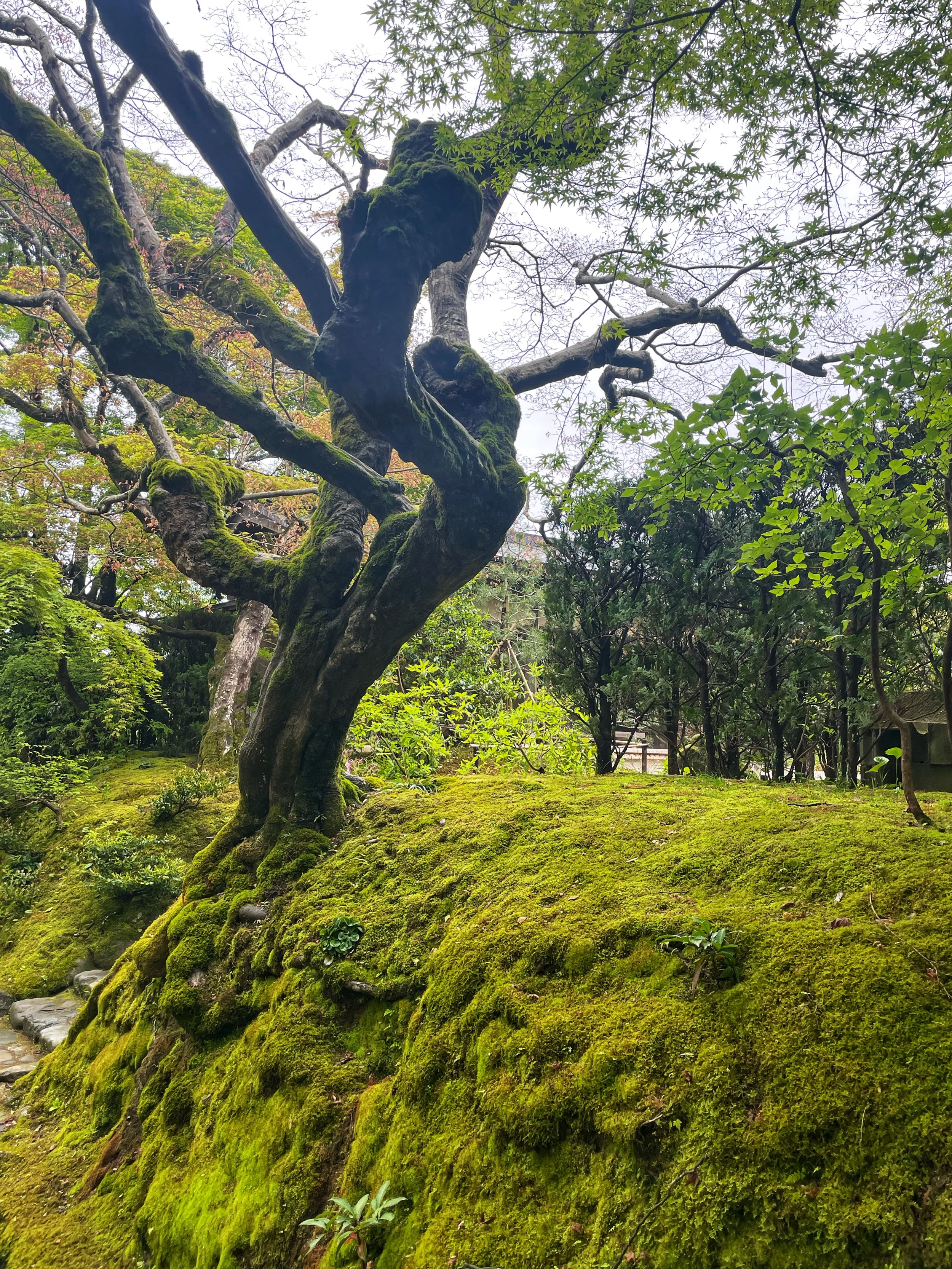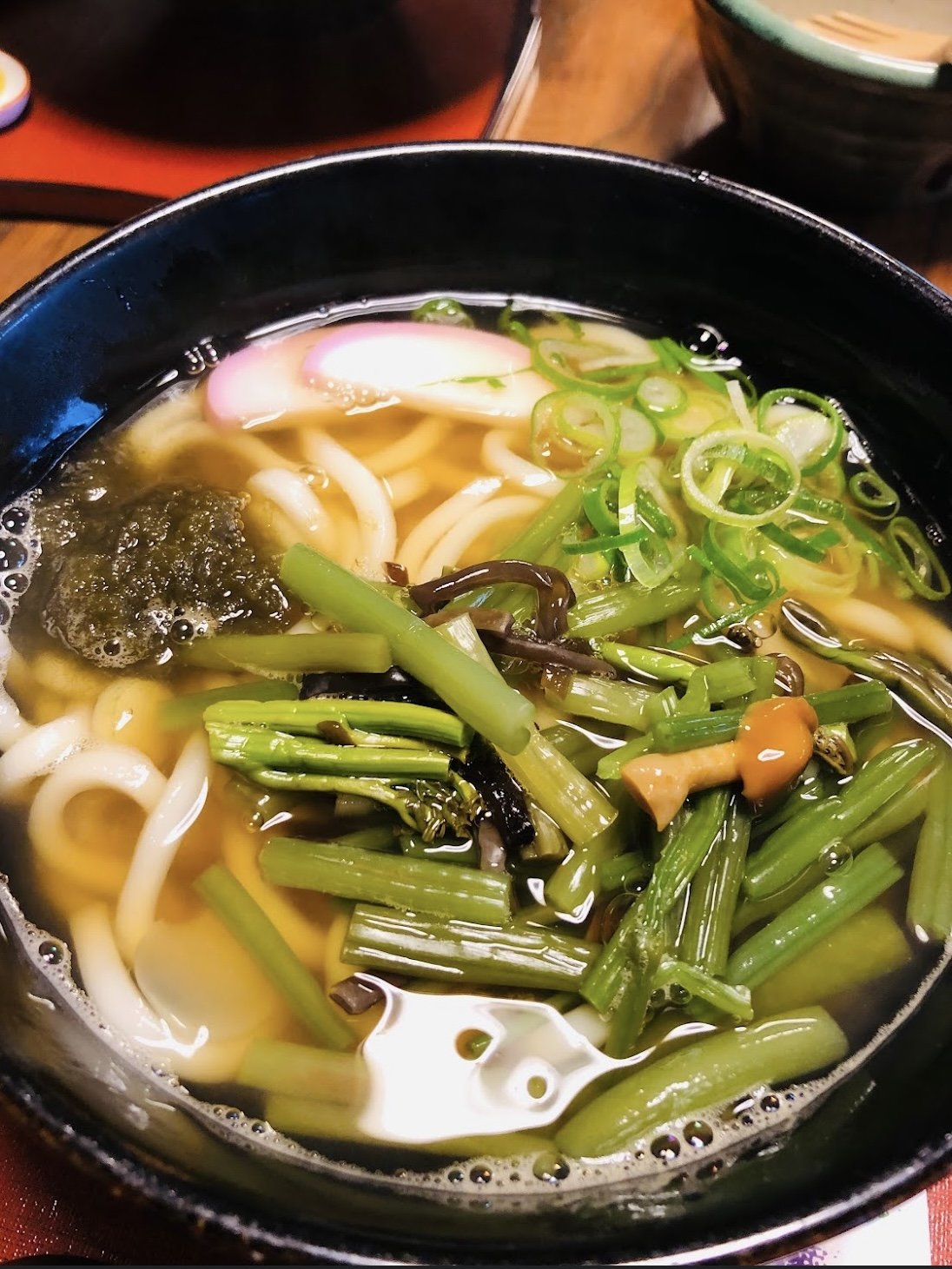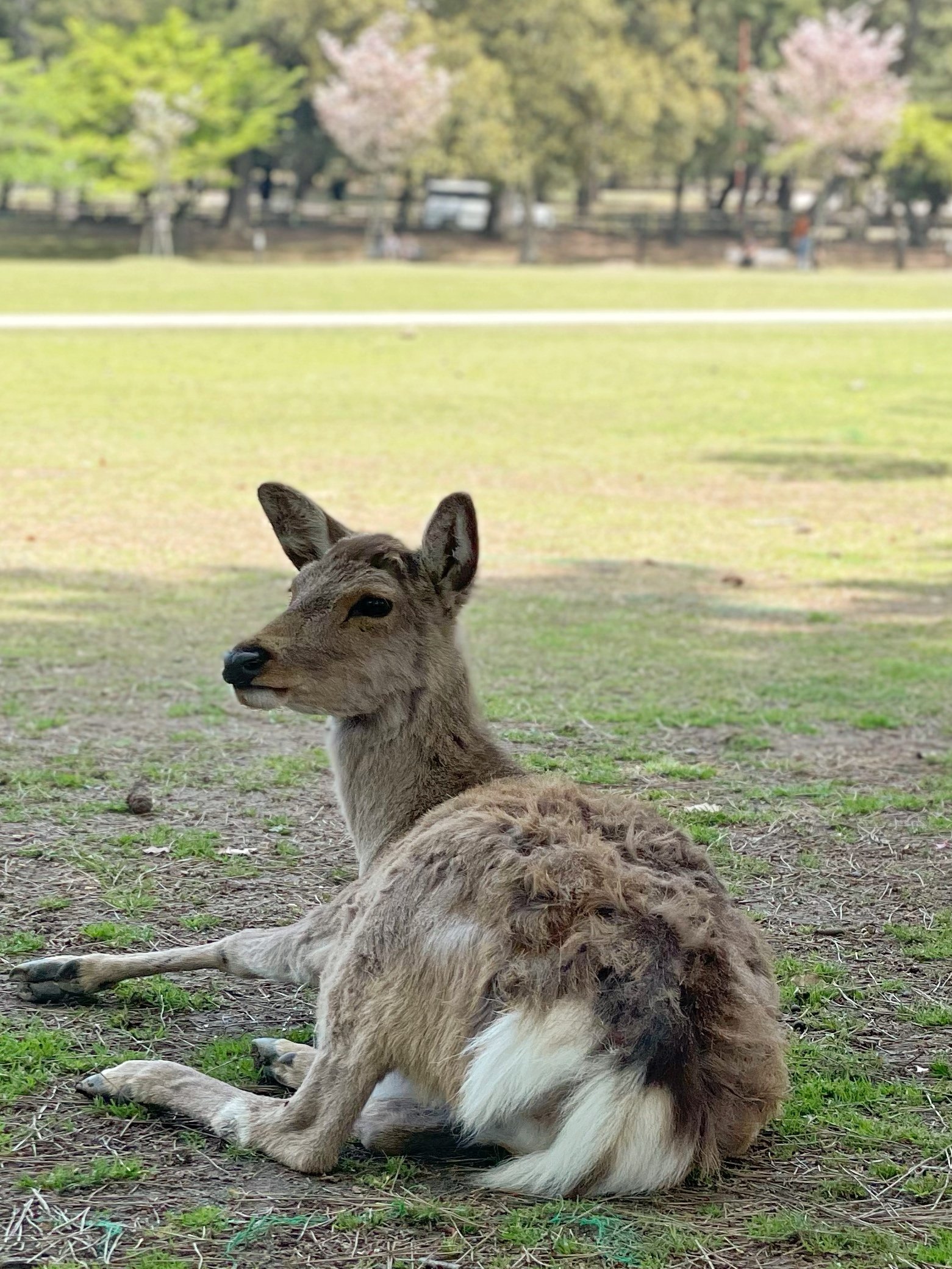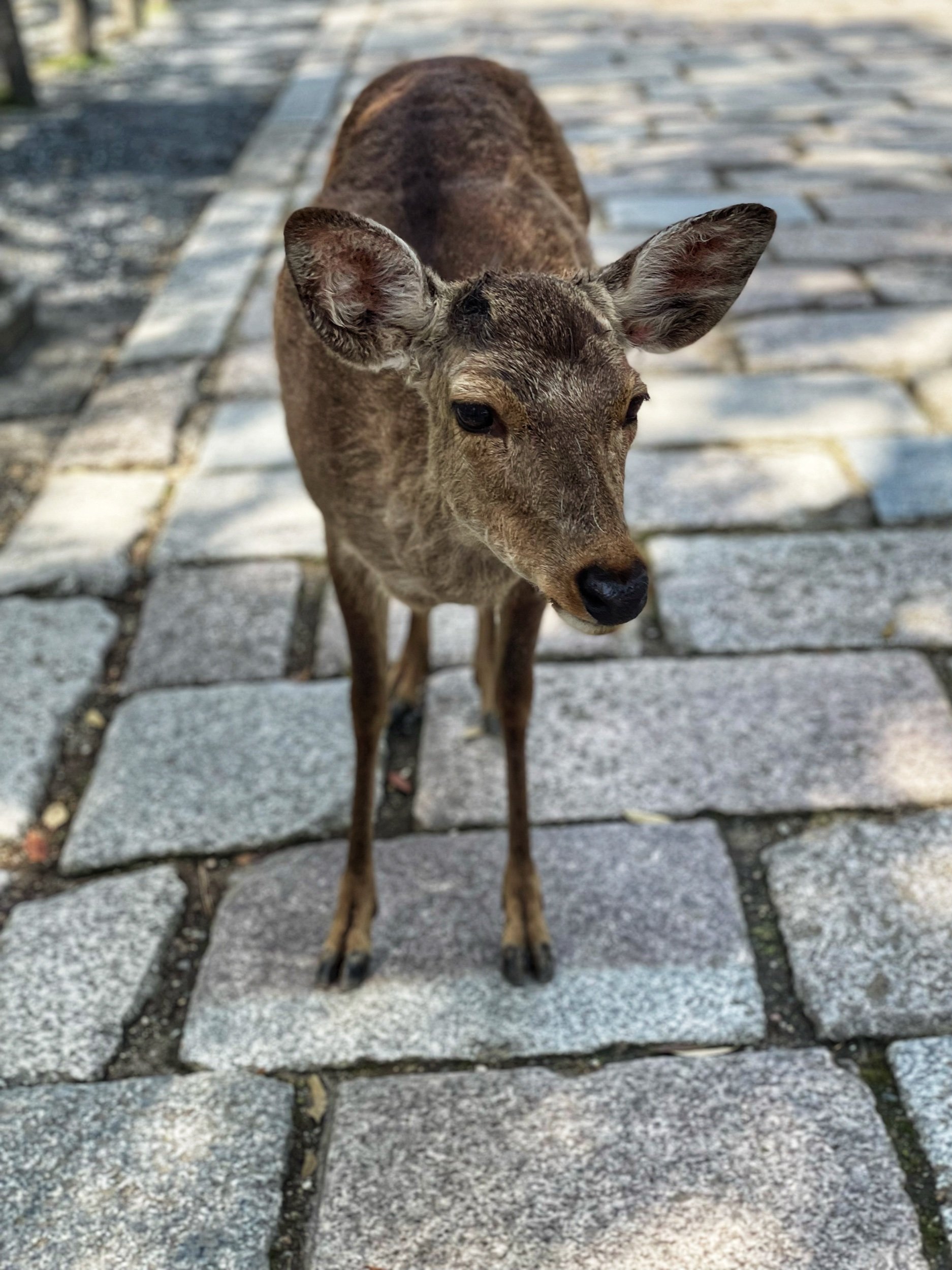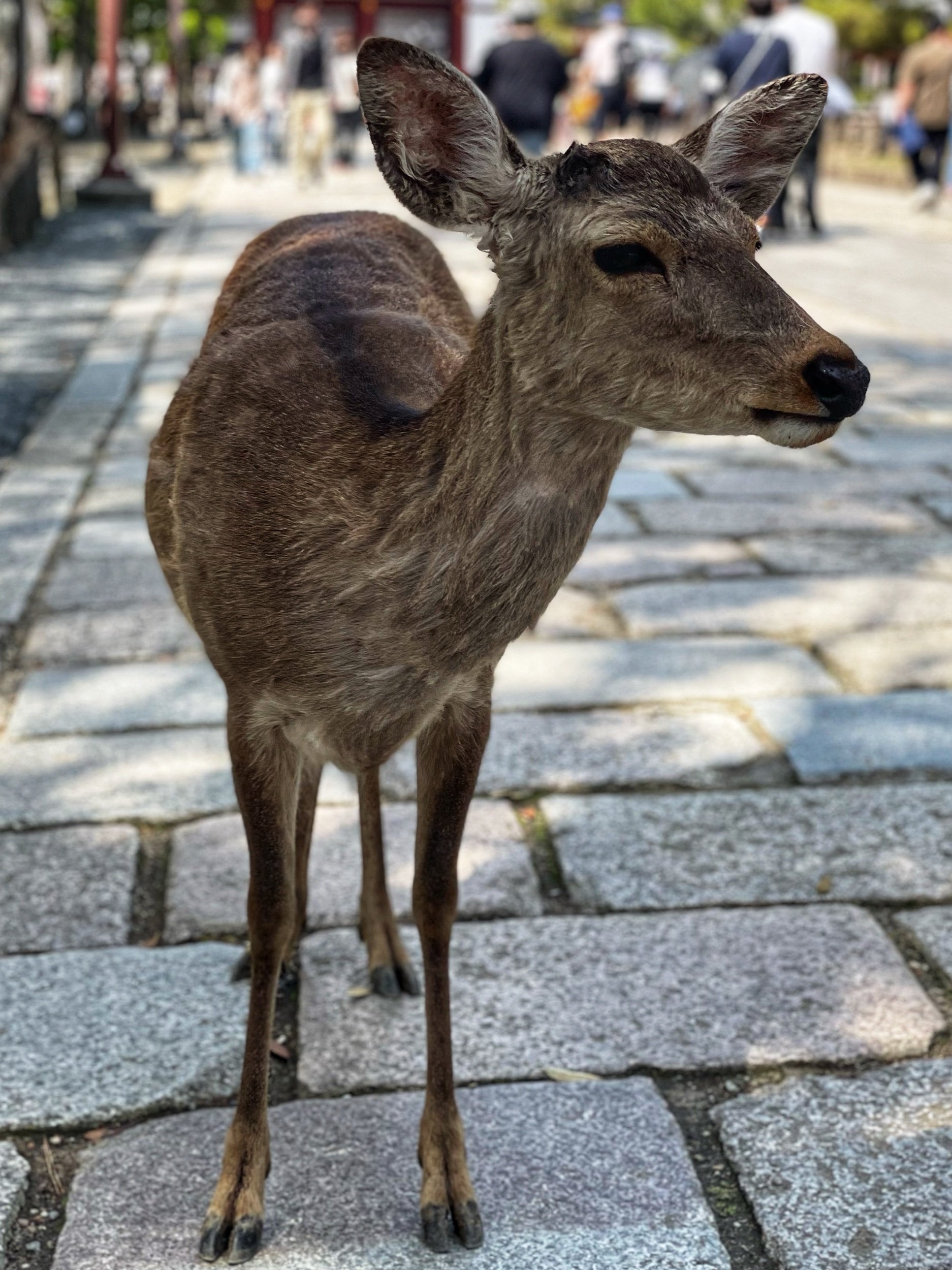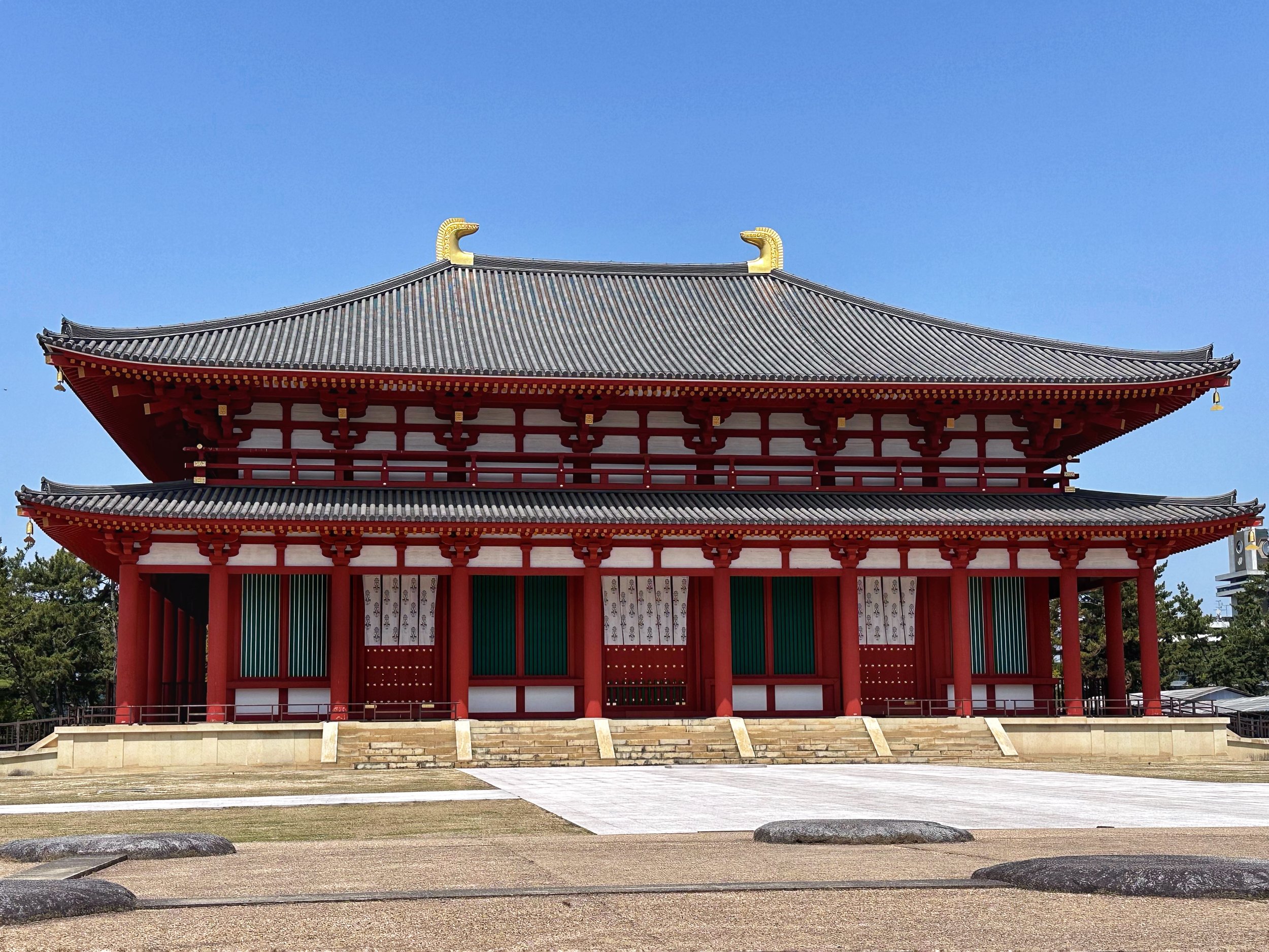Kyoto, Japan
Kyoto highlights
Higashiyama and Gion
Fushimi Inari
Arashiyama
Nara
Why visit Kyoto?
For an educational visit to a beautiful green city full of history and culture.
Getting there and around
From Kanazawa we took the Thunderbird Express train to Kyoto which took just over 2 hours. We reserved seats online ahead of time using our JR passes (see our Kanazawa blog post for more information on JR passes).
On the train we saw glimpses of the countryside in the regions of Ishikawa, Fukui and Shiga. The more rural landscape made a nice contrast to the urban areas we had seen so far.
From Kyoto station our accommodation was only a 2 minute walk. We used buses and JR trains to get around Kyoto. To pay for buses we tapped our SUICA cards when alighting (which we had purchased in Tokyo) and just topped them up as needed using the simple machines at convenience stores such as 7 Eleven or Lawson. For trains to Nara and Arashiyama we used our JR passes.
For just £25 we had forwarded our 2 big backpacks from Tokyo to Kyoto. We weren’t 100% convinced the backpacks would arrive safely but when we reached our accommodation in Kyoto, there they were waiting for us.
It was astounding to us and yet another example of the efficient and reliable customer service in Japan. In the UK we would never trust a courier service with our luggage and expect it to turn up safely at the right address and on time!
Accommodation
We stayed for 5 nights at the Mimaru Kyoto Station apartments at a cost of £82 per night. This was a really good price which we got by booking mid-week off-peak dates (in between cherry blossom season and Golden Week). In addition, we made our reservation before Japan reopened after the Covid pandemic; since then accommodation prices in Kyoto seem to have recovered to pre-2020 levels.
We had a ground floor apartment with bunk beds, a double bed, dining table, kitchen area, bathroom and a small garden. Having the doors opening on to the garden bringing in fresh air and light was really nice.
The Mimaru apart-hotel had a self-service coin laundry (which cost about £5 per load to wash and dry), free toiletries and amenities such as cooking equipment and pyjamas, and a helpful reception desk.
Mimaru was very well located, just 2 minutes walk to Kyoto station for trains, the subway, Shinkansen, and buses. This was the second Mimaru we stayed at and we were really impressed with this chain which was well set-up for families.
Higashiyama and Gion
There are thousands of Buddhist temples and Shinto shrines in Kyoto, many of which are World Heritage Sites. There were so many wonderful sites we could have chosen to visit but rather than cram loads in and feel rushed, we selected just a few.
Each temple charged a small entry fee (about £3 per adult, £1.50 per child). Shoes must be removed before entering the temple and some prohibited photography within the buildings.
We walked up the hill to Kiyomizu-dera, taking in the souvenirs shops and food stalls lining the streets to the temple. We visited on a weekday morning and the walk up to the temple was busy but not too overcrowded.
Kiyomizu-dera is a Buddhist temple on Mount Otowa that is over 1200 years old and dates back to the year 778. We chose to visit this temple for its views over Kyoto. The setting was very pretty and we realised looking out how green a city Kyoto is.
From Kiyomizu we walked to Kodai-ji. The walk here was pleasant and we passed more shops, cafes and traditional houses. Kodai-ji temple was quieter than Kiyomizu-dera with fewer visitors.
We chose to visit this temple, established in the early 17th century, for its grounds and surroundings.
The gardens were peaceful and we saw a turtle swimming in the pond. We loved the short walk up past the lilies and maple trees and then down through the bamboo grove. The bamboo grove here was smaller but less crowded than the bamboo forest at Arashiyama.
We then walked downhill, and got pleasantly lost in some very pretty alleyways, to Kennin-ji temple.
Kennin-ji was built in 1202 and is the oldest zen temple in Kyoto. Our reason for choosing to visit this temple was the artwork inside the buildings including the exquisite painted folding screens, and the ‘twin dragons’ ceiling which was installed in 2002 to commemorate 800 years since the temple was founded.
The artwork was wonderful but what we really loved was the quiet contemplative spaces where we could sit and look out at the beautiful gardens.
After our temple visits we walked down Hanamikoji street, on to Shirakawa Lane, and then across the river to Pontocho Alley. These streets contained intriguing shops and restaurants behind screened doors, each decorated with red lanterns and gorgeous hanging signs.
The Netflix series Cooking for the Maiko House is set and filmed in this part of Kyoto and is one of the most stunning shows we’ve seen in recent years. We loved the series for the food but also for the gentle ambience, and for the insights into cultural traditions that it provided.
We were excited to see this area in real life and it didn’t disappoint. Strolling through the charming streets of Higashiyama and Gion, with an idea of our general direction, but not which precise path to take, was a joy.
We returned to Gion one evening to visit Yasaka Shrine. We arrived before sunset and walked through the shrine complex to Maruyama park where people were sitting, relaxing and eating.
We then walked through the streets of Gion. The area was livelier in the evening, with many tourists and residents visiting bars and restaurants. We caught glimpses of geisha as they walked quickly down Hanamikoji-dori, evaded cameras and disappeared behind shuttered doors.
We made our way back to the shrine after sunset to see it lit up. The street and shrine lanterns cast the area in a warm magical glow.
Fushimi Inari
Using our JR passes we took the Nara line train from Kyoto station (just 2 minutes walk from our accommodation) to Inari station.
In Shintoism, Inari Taisha is a deity known as the protector of rice cultivation and thousands of Shinto shrines are dedicated to Inari throughout Japan.
The legend goes that a rice cake was shot into the air. It turned into a swan and flew away, and upon landing on Mount Inari, it grew into rice. Fushimi Inari was established in 711, and is the oldest and most important Shinto shrine.
Shinto is an animalistic and polytheistic religion. Foxes are said to be the messengers of Inari Taisha and many of the shrine areas and buildings had fox guardian statues at their entrance.
A torri gate symbolises the transition to sacred ground and at Fushimi Inari thousands of torri gates wind their way up the mountain providing a path to the summit.
Torri gates are usually painted with vermillion red which is believed to ward off evil, and is also the symbol of fire and the sun. The choice of red paint has a functional reason too. The paint is usually made using mercury which performs well as a wood preserver.
Fushimi Inari shrine is free to visit. We walked to the back of the main shrine complex and from there started on the path up the mountain.
We passed a number of large tour groups, most of whom turned back after the first series of gates, once they had taken their tickbox selfie.
The walk up the mountain through the forest was beautiful. Along the walk were a number of smaller shrines where we saw worshippers lighting candles.
The further we hiked the thinner the crowds became. It’s highly recommended to either visit in the early morning or to hike up the mountain beyond the crowds to experience this shrine in more peaceful surroundings.
After about an hour of walking we reached Yotsutsuji, which means intersection, where there were a couple of tea rooms and wonderful views over southern Kyoto. Two steep stepped paths led the rest of the way to the mountain. We decided not to persevere with the rest of the hike to the summit and headed back down.
We thoroughly enjoyed our visit to Fushimi Inari which was an interesting and educational place to visit. Harriet had seen torri gates at Nezu shrine in Tokyo but not on this scale, and this was the first time for the rest of the family. So the walk through the torri gates felt special, and unique to Japan.
Arashiyama and Sagano
The neighbourhoods of Arashiyama and Sagano are to the north west of Kyoto and extremely popular with tourists. We visited on a Wednesday, when the Sagano sight seeing railway doesn’t run, in the hope that would mean the area would attract fewer people that day. We visited on a wet overcast day, after the peak cherry blossom season. All of this meant that when we arrived at around 10am there were a few visitors but it certainly wasn’t crowded.
We got up early and using our JR passes took a rapid San-In JR line train from Kyoto to Saga-Arashiyama. The journey was quick and easy.
We followed everyone else to the bamboo forest which is only a short walk from Saga-Arashiyama station. The forest was bigger than we were expecting and the footpaths provided a pleasant walk. The bamboo itself was impressively tall, and the forest had an ethereal feel. Thankfully the paths weren’t too crowded and we could take our time and enjoy the walk.
We then went to Tenrū-ji. Tickets for the temple garden were £3 for adults and £1.50 for children. Tickets to enter the temple buildings were an extra £1.50, and an additional £3 for the Dharma Hall with its dragon painting. We had a number of entrance fees to pay that day so we opted to visit just the garden.
The gardens at Tenrū-ji were very pretty, and beautifully laid out, leading us around and framing the temple buildings. While we were late for cherry blossoms, the wisteria, azaleas and tree lilies were beautiful.
We headed up hill to Okochi Sanso villa. The property’s buildings and gardens were constructed in the 1930s and 1940s by Denjirō Ōkōchi and opened to the public after his death in 1962. The entry fee was relatively high (£6 adults, £3 children) but well worth it in our opinion.
This garden was incredibly gorgeous and an absolute highlight for us. There was a clearly signposted route around the garden that takes you up narrow pathways, over stepping stones and past viewpoints of Kyoto in one direction, and forested mountains in the other.
Then we visited Jojakko-ji temple (£3 adults, £1.50 children) which was surrounded by bamboo woodland and moss gardens. It was very quiet here with only a handful of other visitors. We savoured the opportunity to stroll through the gardens in peace, spotting newly sprouting bamboo and orchids along the way.
At this point we were all getting hungry and the kids decided we had visited enough temples for the day, so we skipped Nison-in and Gio-ji temples. We will save these for a future visit to Japan.
We ate at Ogura-Chaya which was a sweet restaurant right next to Jojakko-ji. The restaurant served udon noodle soup with optional toppings (vegetables, crispy pieces of tempura batter, eggs, or tofu). The food was delicious.
The staff were really friendly, going to special effort to engage with our kids, bringing them origami hats and samurai swords to dress up with, hot chocolate and biscuits.
We were worried that this area wouldn’t be worth visiting; that it might be underwhelming or overhyped, a victim of tickbox tourism and instagram feeds. But it really was a very scenic and lovely place to walk around. We’d love to return to the Arashiyama and Sagano districts.
Nara
On our last day in Kyoto we took a short day trip, using our JR passes to take the train to Nara.
Nara was the capital of Japan for 84 years before the capital was moved to Kyoto. It has a number of important temples and shrines which together form a World Heritage Site, as well as shops, museums and art galleries.
It is also famous for being home to over 1000 sika deer who are revered as heavenly animals and protectors of Nara and who roam free in the town.
We walked for 15 minutes through the town centre to Kōfuku-ji with its impressive pagoda and complex of temple buildings set over a wide space.
We then walked to Nara park and on to Tōdai-ji temple. Tōdai-ji is a UNESCO world heritage site and a significant Buddhist temple.
In 743 Emperor Shōmu legislated for Buddhist temples to be constructed across Japan. A massive 2.6 million people were involved in temple construction including sourcing materials and crafting statues. Despite earthquakes and fires, Tōdai-ji temple was completed in 751. The project was so ambitious it required huge imports of gold, used up all of the country’s bronze reserves, and nearly bankrupted the Japanese economy.
Inside the main hall is the incredible daibutsu (great Buddha) statue of the Vairocana Buddha.
Cast in bronze, standing 16m tall, and weighing 500 tonnes, this is the largest great Buddha statue in the world.
Also in the great hall were golden Bodhisattvas statues and statues of the four heavenly kings.
We enjoyed Nara, and the insight into Japanese culture and history it provided. After a lot of walking we took the train back to Kyoto and spent the late afternoon at our apartment, getting some much needed rest after a busy 4 days of sightseeing in Kyoto.
Final thoughts
Kyoto is a beautiful city full of history and culture, with charming streets and green spaces that offer a lot to experience.
The city was well connected with efficient affordable public transport options. The temples of Higashiyama, Fushimi Inara shrine, and Arashiyama were highlights, each with their own unique features.
We enjoyed strolling through the charming streets and alleyways, taking in the intriguing shops and restaurants, and enjoying the peaceful gardens and contemplative spaces.
Wild Rumpus Travel copyright © 2019 - 2024 all rights reserved.

